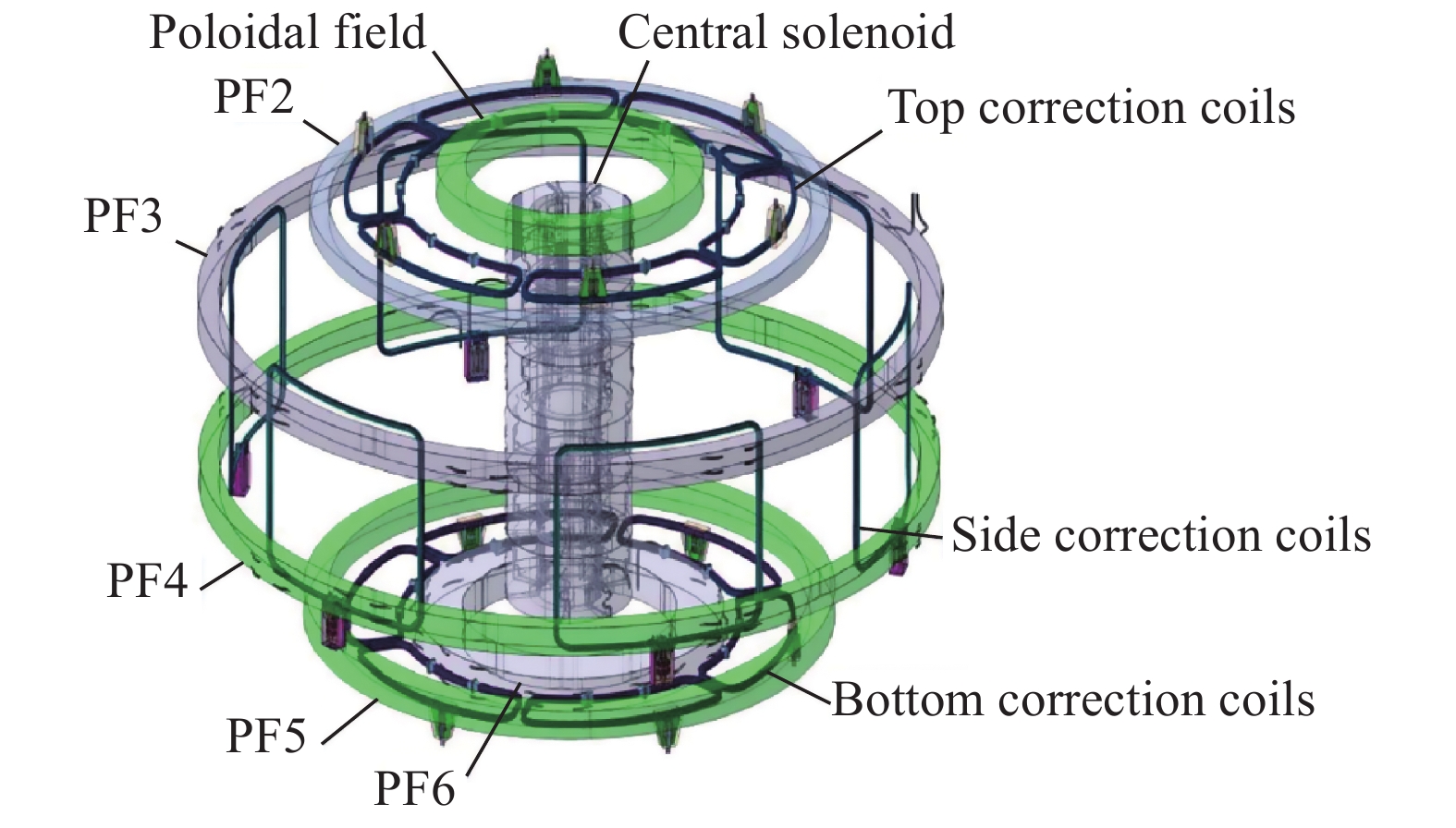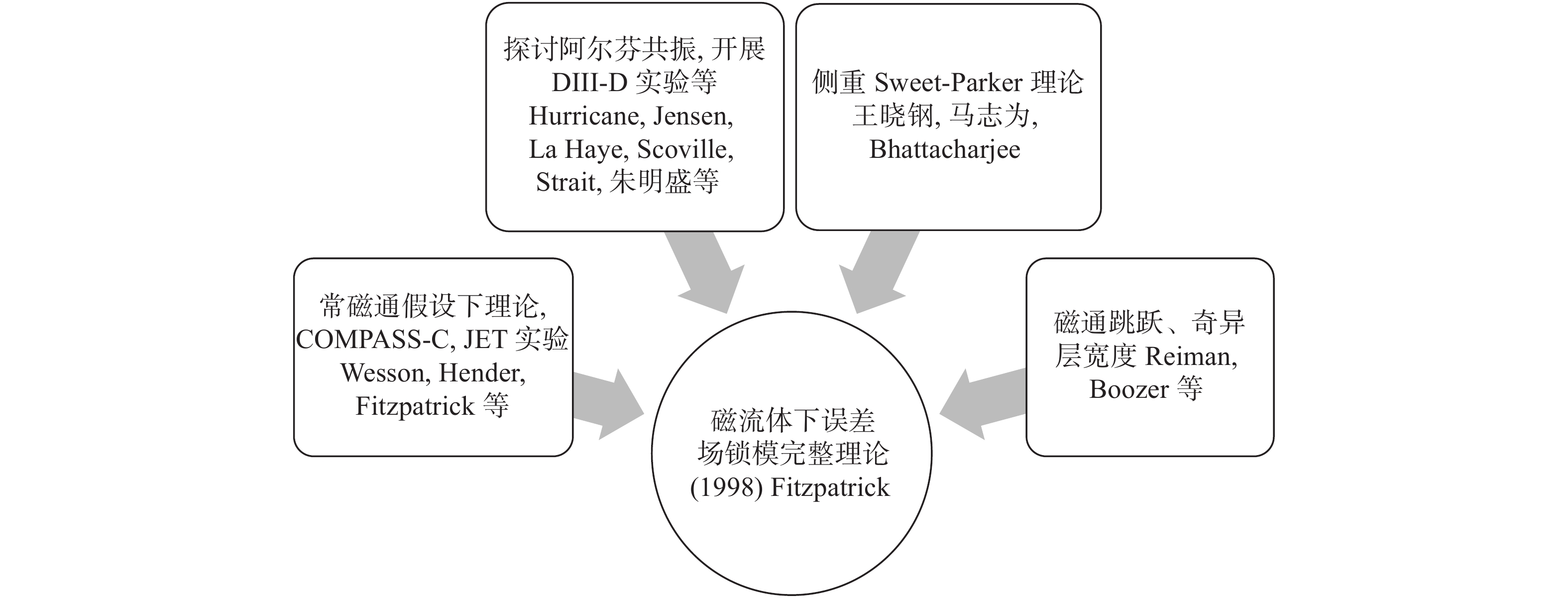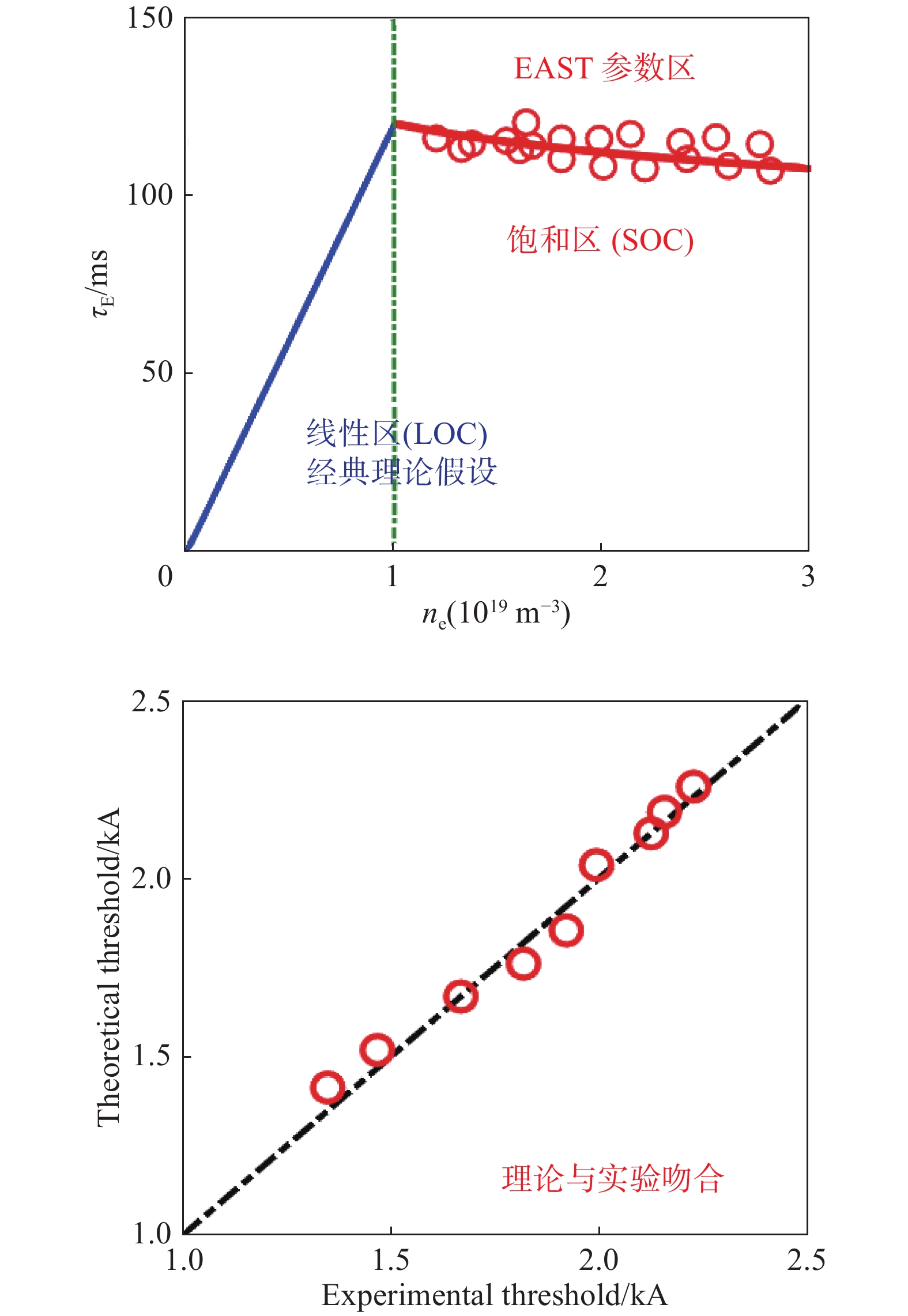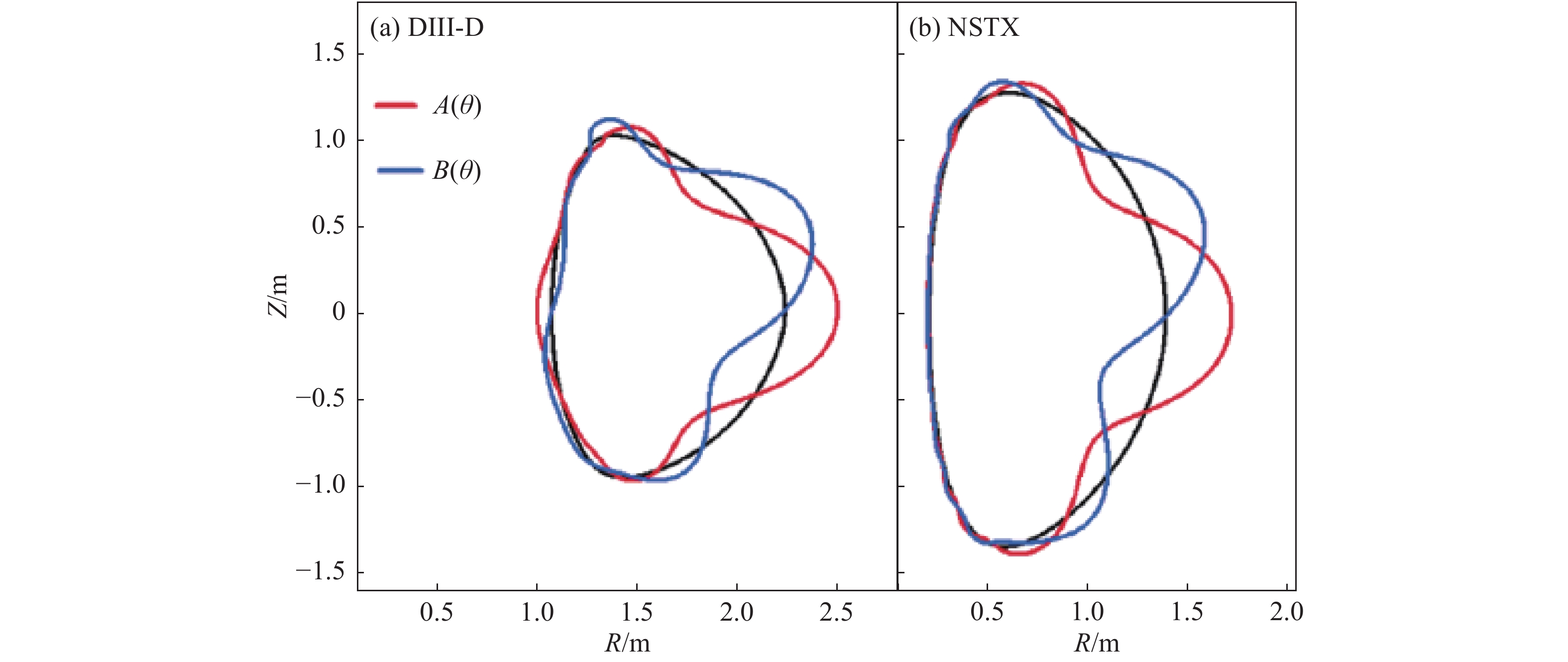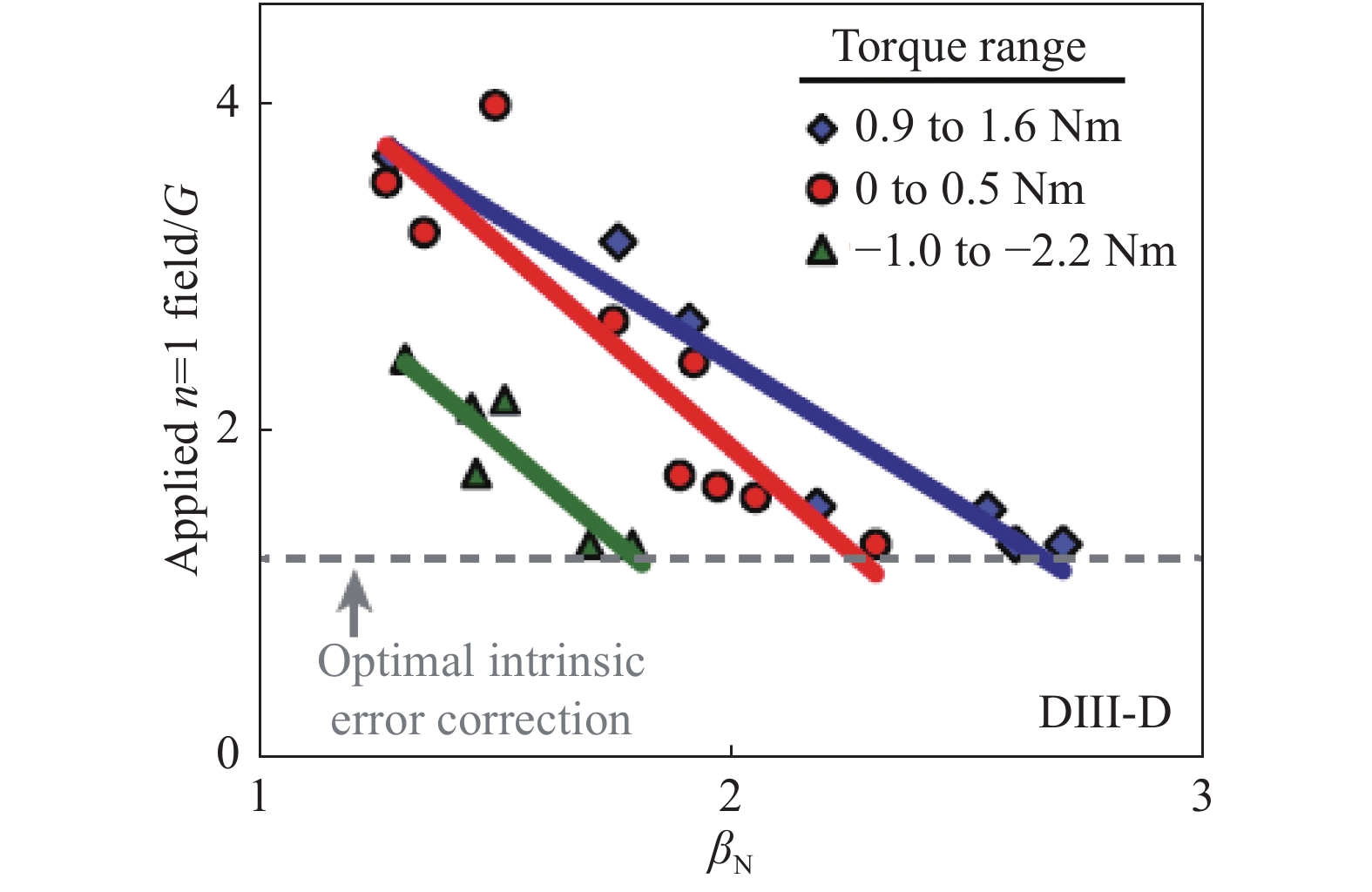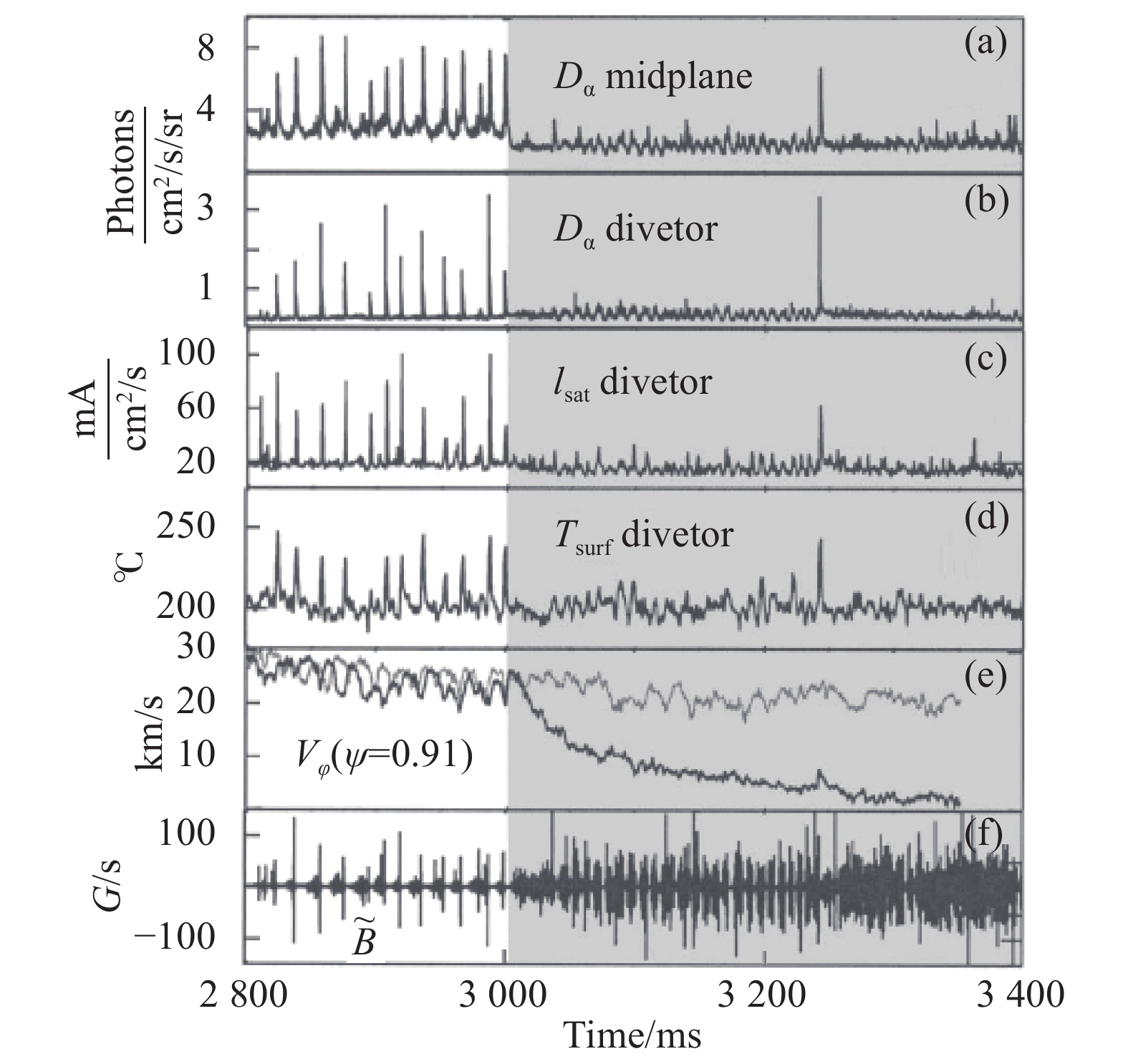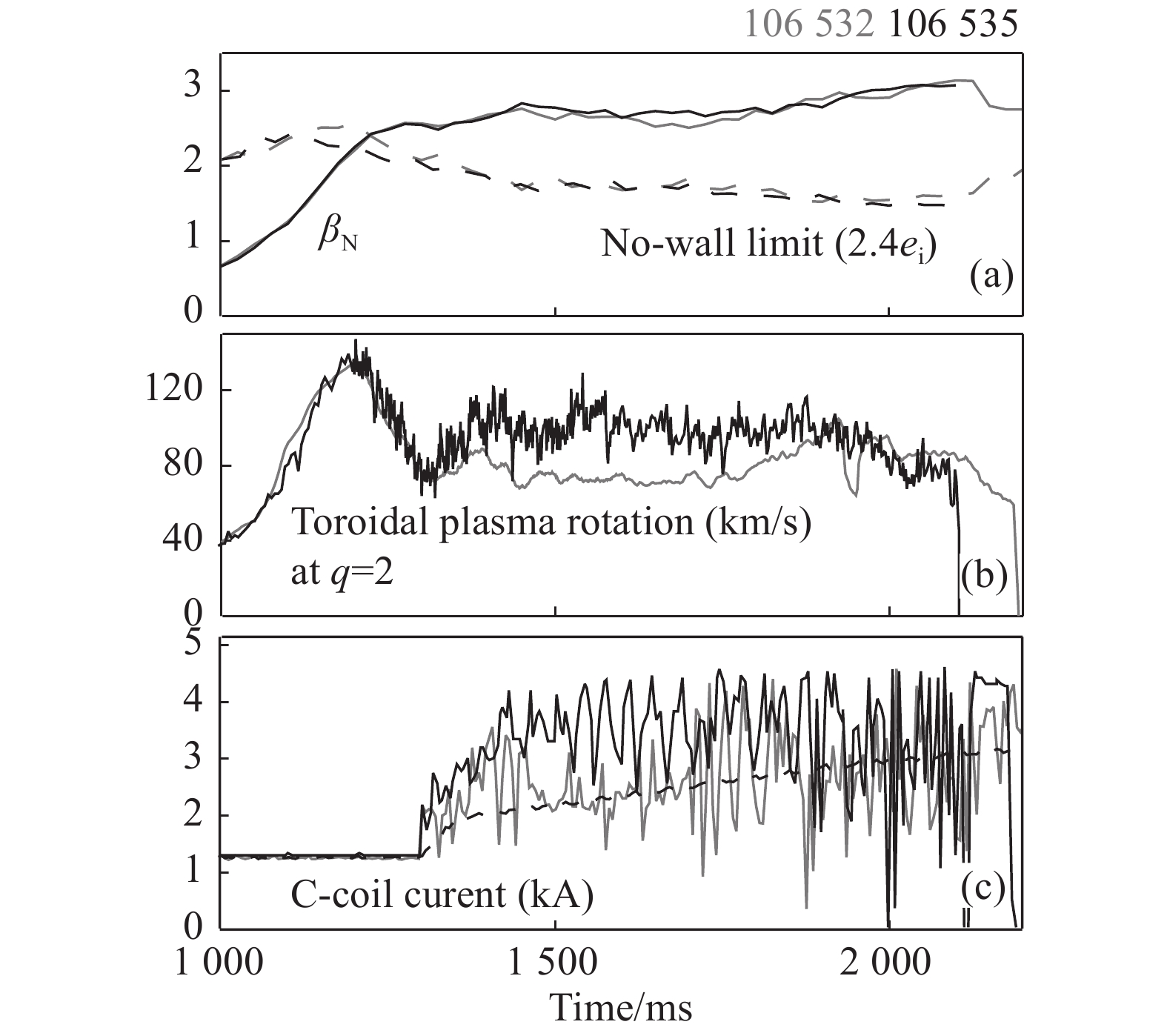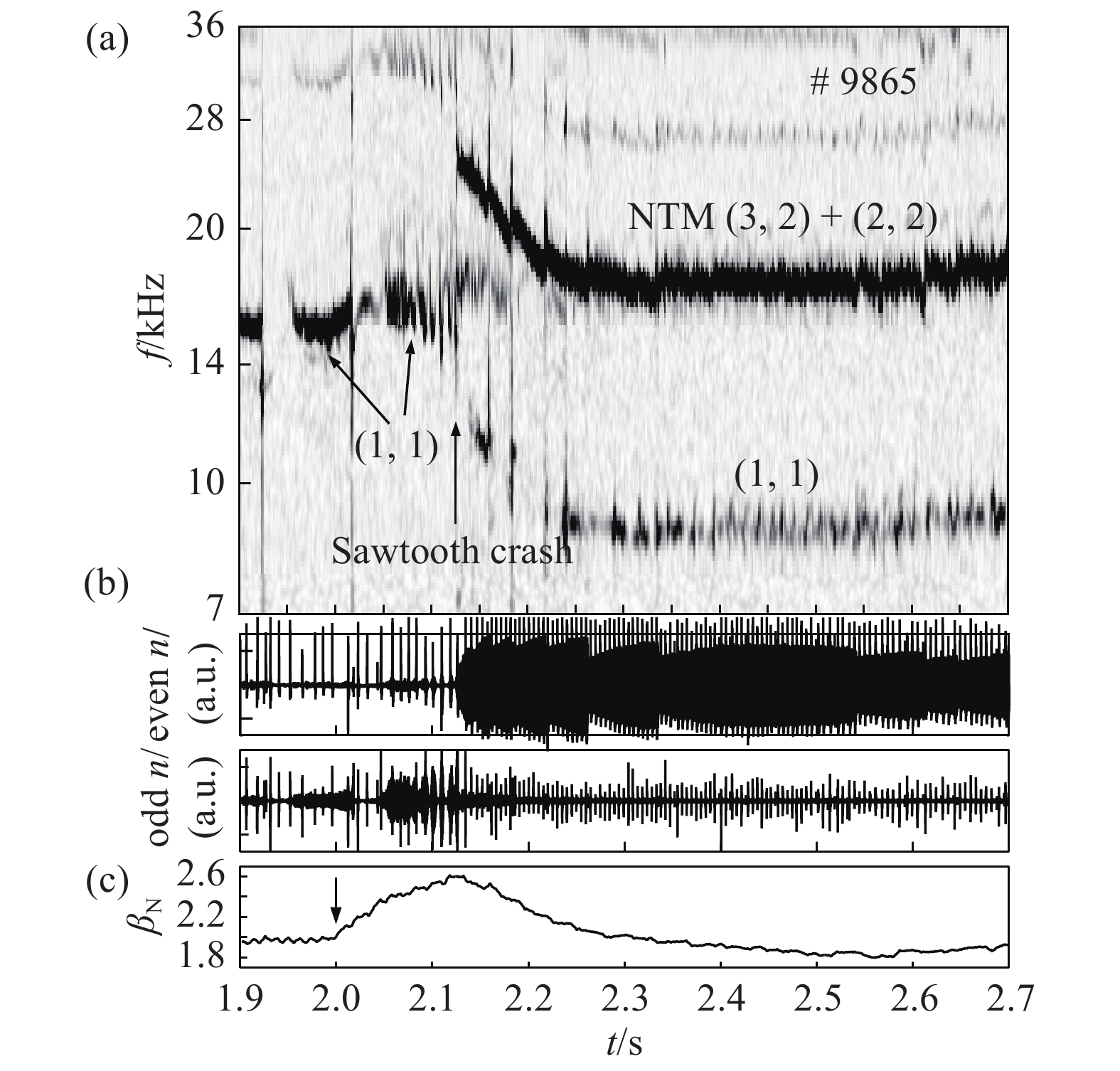| [1] |
朱士尧. 核聚变原理[M]. 合肥: 中国科学技术大学出版社, 1992. |
ZHU S Y. Principles of nuclear fusion[M]. Hefei: Press of University of Science and Technology of China, 1992. |
| [2] |
石秉仁. 磁约束聚变: 原理与实践 [M]. 北京: 原子能出版社, 1999. |
SHI B R. Magnetic confinement fusion: principles and practice [M]. Beijing: Atomic Energy Publishing House, 1999. |
| [3] |
ITER Physics Basis Editors, ITER Physics Expert Group Chairs and Co-Chairs, ITER Joint Central Team and Physics Integration Unit, et al. Chapter 1: overview and summary [J]. Nuclear Fusion, 1999, 39(12): 2137-2174. DOI: 10.1088/0029-5515/39/12/301. |
| [4] |
ITER Physics Expert Groups on Confinement and Transport and Confinement Modelling and Database, ITER Physics Basis Editors, ITER EDA, et al. Chapter 2: plasma confinement and transport [J]. Nuclear Fusion, 1999, 39(12): 2175-2249. DOI: 10.1088/0029-5515/39/12/302. |
| [5] |
MIRNOV S, WESLEY J, FUJISAWA N, et al. Chapter 3: MHD stability, operational limits and disruptions [J]. Nuclear Fusion, 1999, 39(12): 2251-2389. DOI: 10.1088/0029-5515/39/12/303. |
| [6] |
ITER Physics Expert Group on Energetic Particles, Heating and Current Drive, ITER Physics Basis Editors, ITER EDA, et al. Chapter 5: physics of energetic ions [J]. Nuclear Fusion, 1999, 39(12): 2471-2495. DOI: 10.1088/0029-5515/39/12/305. |
| [7] |
ITER Physics Expert Group on Disruptions, Plasma Control, and MHD, ITER Physics Expert Group on Energetic Particles, Heating and Current Drive, ITER Physics Expert Group on Diagnostics and ITER Physics Basis Editors, et al. Chapter 8: plasma operation and control [J]. Nuclear Fusion, 1999, 39(12): 2577-2625. DOI: 10.1088/0029-5515/39/12/308. |
| [8] |
ITER Physics Expert Group on Energetic Particles, Heating and Current Drive, ITER Physics Basis Editors, ITER EDA, et al. Chapter 6: plasma auxiliary heating and current drive [J]. Nuclear Fusion, 1999, 39(12): 2495-2539. DOI: 10.1088/0029-5515/39/12/306. |
| [9] |
SHIMADA M, CAMPBELL D J, MUKHOVATOV V, et al. Chapter 1: overview and summary [J]. Nuclear Fusion, 2007, 47(6): S1-S17. DOI: 10.1088/0029-5515/47/6/S01. |
| [10] |
DOYLE E J, HOULBERG W A, KAMADA Y, et al. Chapter 2: plasma confinement and transport [J]. Nuclear Fusion, 2007, 47(6): S18-S127. DOI: 10.1088/0029-5515/47/6/S02. |
| [11] |
HENDER T C, WESLEY J C, BIALEK J, et al. Chapter 3: MHD stability, operational limits and disruptions [J]. Nuclear Fusion, 2007, 47(6): S128-S202. DOI: 10.1088/0029-5515/47/6/S03. |
| [12] |
LOARTE A, LIPSCHULTZ B, KUKUSHKIN A S, et al. Chapter 4: power and particle control [J]. Nuclear Fusion, 2007, 47(6): S203-S263. DOI: 10.1088/0029-5515/47/6/S04. |
| [13] |
FASOLI A, GORMENZANO C, BERK H L, et al. Chapter 5: physics of energetic ions [J]. Nuclear Fusion, 2007, 47(6): S264-S284. DOI: 10.1088/0029-5515/47/6/S05. |
| [14] |
GORMEZANO C, SIPS A C C, LUCE T C, et al. Chapter 6: steady state operation [J]. Nuclear Fusion, 2007, 47(6): S285-S336. DOI: 10.1088/0029-5515/47/6/S06. |
| [15] |
GRIBOV Y, HUMPHREYS D, KAJIWARA K, et al. Chapter 8: plasma operation and control [J]. Nuclear Fusion, 2007, 47(6): S385-S403. DOI: 10.1088/0029-5515/47/6/S08. |
| [16] |
MUKHOVATOV V, SHIMADA M, LACKNER K, et al. Chapter 9: ITER contributions for demo plasma development [J]. Nuclear Fusion, 2007, 47(6): S404-S413. DOI: 10.1088/0029-5515/47/6/S09. |
| [17] |
ONGENA J, KOCH R, WOLF R, et al. Magnetic-confinement fusion [J]. Nature Physics, 2016, 12(5): 398-410. DOI: 10.1038/nphys3745. |
| [18] |
SNIPES J A, CAMPBELL D J, HAYNES P S, et al. Large amplitude quasi-stationary MHD modes in JET [J]. Nuclear Fusion, 2011, 28(6): 1085-1097. DOI: 10.1088/0029-5515/28/6/010. |
| [19] |
NINOMIYA H, ITAMI K, NEYATANI Y, et al. Large m=3/n=l locked mode in JT-60 and its stabilization [J]. Nuclear Fusion, 2011, 28(7): 1275. DOI: 10.1088/0029-5515/28/7/010. |
| [20] |
STRAIT E J, LAO L, KELLMAN A G, et al. MHD instabilities near the β limit in the doublet III-D tokamak [J]. Physical Review Letters, 1989, 62(11): 1282-1285. DOI: 10.1103/physrevlett.62.1282. |
| [21] |
SNIPES J A, CAMPBELL D J, HENDER T C, et al. Plasma stored energy and momentum losses during large MHD activity in JET [J]. Nuclear Fusion, 1990, 30(2): 205-218. DOI: 10.1088/0029-5515/30/2/002. |
| [22] |
WESSON J A, GILL R D, HUGON M, et al. Disruptions in JET [J]. Nuclear Fusion, 1989, 29(4): 641-666. DOI: 10.1088/0029-5515/29/4/009. |
| [23] |
LA HAYE R J, LAO L L, STRAIT E J, et al. High beta tokamak operation in DIII-D limited at low density/collisionality by resistive tearing modes [J]. Nuclear Fusion, 1997, 37(3): 397-401. DOI: 10.1088/0029-5515/37/3/I08. |
| [24] |
HENDER T C, FITZPATRICK R, MORRIS A W, et al. Effect of resonant magnetic perturbations on COMPASS-C tokamak discharges [J]. Nuclear Fusion, 1992, 32(12): 2091-2117. DOI: 10.1088/0029-5515/32/12/I02. |
| [25] |
SCOVILLE J T, HAYE R, KELLMAN A G, et al. Locked modes in DIII-D and a method for prevention of the low density mode [J]. Nuclear Fusion, 2011, 31(5): 875-890. DOI: 10.1088/0029-5515/31/5/006. |
| [26] |
LA HAYE R J, HYATT A W, SCOVILLE J T. Nonlinear instability to low m, n=1 error fields in DIII-D as a function of plasma fluid rotation and beta [J]. Nuclear Fusion, 1992, 32(12): 2119. DOI: 10.1088/0029-5515/32/12/I03. |
| [27] |
LAHAYE R J, FITZPATRICK R, HENDER T C, et al. Critical error fields for locked mode instability in tokamaks [J]. Physics of Fluids B: Plasma Physics, 1992, 4(7): 2098-2103. DOI: 10.1063/1.860017. |
| [28] |
BUTTERY R J, DE' BENEDETTI M, GATES D A, et al. Error field mode studies on JET, COMPASS-D and DIII-D, and implications for ITER [J]. Nuclear Fusion, 1999, 39: 1827-1835. DOI: 10.1088/0029-5515/39/11y/323. |
| [29] |
BUTTERY R J, DE' BENEDETTI M, HENDER T C, et al. Error field experiments in JET [J]. Nuclear Fusion, 2000, 40(4): 807-819. DOI: 10.1088/0029-5515/40/4/306. |
| [30] |
LAZZARO E, BUTTERY R J, HENDER T C, et al. Error field locked modes thresholds in rotating plasmas, anomalous braking and spin-up [J]. Physics of Plasmas, 2002, 9(9): 3906-3918. DOI: 10.1063/1.1499495. |
| [31] |
HUTCHINSON I H, WOLFE S M, GRANETZ R S, et al. Asymmetric-field mode locking in alcator c-mod [C]// Anon. 20th IAEA Fusion Energy Conference, Vilamoura, Portugal, 2004. Vilamoura: [s. n.], 2004. |
| [32] |
REIMERDES H, GAROFALO A M, STRAIT E J, et al. Effect of resonant and non-resonant magnetic braking on error field tolerance in high beta plasmas [J]. Nuclear Fusion, 2009, 49(11): 115001. DOI: 10.1088/0029-5515/49/11/115001. |
| [33] |
BUTTERY R J, GERHARDT S, HAYE R J L, et al. The impact of 3D fields on tearing mode stability of H-modes [J]. Nuclear Fusion, 2011, 51(7): 073016. DOI: 10.1088/0029-5515/51/7/073016. |
| [34] |
REIMERDES H, BUTTERY R J, GAROFALO A M, et al. Error field tolerance and error field correction strategies and their applicability to ITER [J]. Fusion Science and Technology, 2011, 59(3): 572-585. DOI: 10.3109/09553002.2011.538129. |
| [35] |
BUTTERY R J, BOOZER A H, LIU Y Q, et al. The limits and challenges of error field correction for ITER [J]. Physics of Plasmas(1994-present), 2012, 19(5): 056111. DOI: 10.1063/1.3694655. |
| [36] |
REIMERDES H, HANSON J M, OYAMA N, et al. Rotation braking and error field correction of the test blanket module induced magnetic field error in iter [C]// Anon. Proceedings of 24th Iaea Fusion Energy Conference, San diego, CA, USA, 2012. San diego: [s. n.], 2012. |
| [37] |
PARK J K, MENARD J E, GERHARDT S P, et al. Sensitivity to error fields in NSTX high β plasmas [J]. Nuclear Fusion, 2012, 52(2): 023004. DOI: 10.1088/0029-5515/52/2/023004. |
| [38] |
PAZ-SOLDAN C, BUTTERY R J, GAROFALO A M, et al. The spectral basis of optimal error field correction on DIII-D [J]. Nuclear Fusion, 2014, 54(7): 073013. DOI: 10.1088/0029-5515/54/7/073013. |
| [39] |
LANCTOT M J, PARK J K, PIOVESAN P, et al. Impact of toroidal and poloidal mode spectra on the control of non-axisymmetric fields in tokamaks [J]. Physics of Plasmas, 2017, 24(5): 056117. DOI: 10.1063/1.4982688. |
| [40] |
KOSLOWSKI H R, LIANG Y, KRäMER-FLECKEN A, et al. Dependence of the threshold for perturbation field generated m/n = 2/1 tearing modes on the plasma fluid rotation [J]. Nuclear Fusion, 2006, 46(8): L1-L5. DOI: 10.1088/0029-5515/46/8/L01. |
| [41] |
WANG N, RAO B, HU Q, et al. Study of the penetration of resonant magnetic perturbations in J-TEXT [J]. Nuclear Fusion, 2014, 54(6): 064014. DOI: 10.1088/0029-5515/54/6/064014. |
| [42] |
WANG H H, SUN Y W, QIAN J P, et al. Observation of spectrum effect on the measurement of intrinsic error field on EAST [J]. Nuclear Fusion, 2016, 56(6): 066011. DOI: 10.1088/0029-5515/56/6/066011. |
| [43] |
WANG H H, SUN Y W, SHI T H, et al. Density scaling on n = 1 error field penetration in ohmically heated discharges in EAST [J]. Nuclear Fusion, 2018, 58(5): 056024. DOI: 10.1088/1741-4326/aab5c0. |
| [44] |
WANG H H, SUN Y, SHI T, et al. Toroidal field and q 95 scalings on error field penetration in EAST [J]. Nuclear Fusion, 2020, 60(12): 126008. DOI: 10.1088/1741-4326/abaff7. |
| [45] |
LOGAN N C, PARK J K, HU Q, et al. Robustness of the tokamak error field correction tolerance scaling [J]. Plasma Physics and Controlled Fusion, 2020, 62(8): 084001. DOI: 10.1088/1361-6587/ab9a12. |
| [46] |
YE C, SUN Y W, WANG H H, et al. Density scaling of error field penetration in radio-frequency-dominant heating plasmas in the EAST tokamak [J]. Nuclear Fusion, 2021, 61(5): 056010. DOI: 10.1088/1741-4326/abeed5. |
| [47] |
REN J, SUN Y W, WANG H H, et al. Penetration of n = 2 resonant magnetic field perturbations in EAST [J]. Nuclear Fusion, 2021, 61(5): 056007. DOI: 10.1088/1741-4326/abea57. |
| [48] |
PAZ-SOLDAN C, LANCTOT M J, LOGAN N C, et al. The importance of matched poloidal spectra to error field correction in DIII-D [J]. Physics of Plasmas (1994-present), 2014, 21(7): 1827. DOI: 10.1063/1.4886795. |
| [49] |
PARK J K, SCHAFFER M J, MENARD J E, et al. Control of asymmetric magnetic perturbations in tokamaks [J]. Physical Review Letters, 2007, 99(19): 195003. DOI: 10.1103/PhysRevLett.99.195003. |
| [50] |
HOWELL D F, HENDER T C, CUNNINGHAM G. Locked mode thresholds on the MAST spherical tokamak [J]. Nuclear Fusion, 2007, 47(9): 1336. DOI: 10.1088/0029-5515/47/9/034. |
| [51] |
WOLFE S M, HUTCHINSON I H, GRANETZ R S, et al. Nonaxisymmetric field effects on alcator c-mod [J]. Physics of Plasmas, 2005, 12(5): 056110. DOI: 10.1063/1.1883665. |
| [52] |
FERRARO N M, PARK J K, MYERS C E, et al. Error field impact on mode locking and divertor heat flux in NSTX-U [J]. Nuclear Fusion, 2019, 59(8): 086021. DOI: 10.1088/1741-4326/ab22c4. |
| [53] |
LA HAYE R J. Physics of locked modes in ITER: error field limits, rotation for obviation, and measurement of field errors [R/OL]. (1997-3-17)[2022-05-31].https://core.ac.uk/reader/194851177. |
| [54] |
HUANG Z, LIANG Y, HU Q, et al. Disentanglement of density and rotation dependences of the field penetration threshold on the J-TEXT tokamak [J]. Nuclear Fusion, 2020, 60(6): 064003. DOI: 10.1088/1741-4326/ab8859. |
| [55] |
JIN W, DING Y H, RAO B, et al. Dependence of plasma responses to an externally applied perturbation field on MHD oscillation frequency on the J-TEXT tokamak [J]. Plasma Physics and Controlled Fusion, 2013, 55(3): 035010. DOI: 10.1088/0741-3335/55/3/035010. |
| [56] |
RAO B, DING Y H, YU K X, et al. Measurement of 2/1 intrinsic error field of joint text tokamak [J]. Review of Scientific Instruments, 2013, 84(4): 043504-043505. DOI: 10.1063/1.4801461. |
| [57] |
DING Y, CHEN Z, CHEN Z, et al. Overview of the J-TEXT progress on rmp and disruption physics [J]. Plasma Science and Technology, 2018, 20(12): 125101. DOI: 10.1088/2058-6272/aadcfd. |
| [58] |
IN Y, PARK J K, JEON J M, et al. Extremely low intrinsic non-axisymmetric field in kstar and its implications [J]. Nuclear Fusion, 2015, 55(4): 043004. DOI: 10.1088/0029-5515/55/4/043004. |
| [59] |
IN Y, PARK J K, JEON Y M, et al. Enhanced understanding of non-axisymmetric intrinsic and controlled field impacts in tokamaks [J]. Nuclear Fusion, 2017, 57(11): 116054. DOI: 10.1088/1741-4326/aa791c. |
| [60] |
NAVE M F F, WESSON J A. Mode-locking in tokamaks [J]. Nuclear Fusion, 1990, 30(12): 2575-2583. DOI: 10.1088/0029-5515/30/12/011. |
| [61] |
FITZPATRICK R, HENDER T C. The interaction of resonant magnetic perturbations with rotating plasmas [J]. Physics of Fluids B: Plasma Physics, 1991, 3(3): 644-673. DOI: 10.1063/1.859863. |
| [62] |
JENSEN T H, LEONARD A W. Control of rotation velocity profile of tokamaks by application of slow electromagnetic waves [J]. Physics of Fluids B: Plasma Physics, 1991, 3(12): 3422. DOI: 10.1063/1.859772. |
| [63] |
JENSEN T H, LEONARD A W, LA HAYE R J, et al. Effects of plasma flow on error field islands [J]. Physics of Fluids B: Plasma Physics, 1991, 3(7): 1650-1656. DOI: 10.1063/1.859685. |
| [64] |
WANG X G, BHATTACHARJEE A. Forced reconnection and mode locking in rotating cylindrical plasmas [J]. Physics of Plasmas, 1997, 4(3): 748-754. DOI: 10.1063/1.872182. |
| [65] |
FITZPATRICK R. Interaction of tearing modes with external structures in cylindrical geometry (plasma) [J]. Nuclear Fusion, 2002, 33(7): 1049-1084. DOI: 10.1088/0029-5515/33/7/I08. |
| [66] |
FITZPATRICK R, HASTIE R J, MARTIN T J, et al. Stability of coupled tearing modes in tokamaks [J]. Nuclear Fusion, 1993, 33(10): 1533-1576. DOI: 10.1088/0029-5515/33/10/I11. |
| [67] |
FITZPATRICK R. Bifurcated states of a rotating tokamak plasma in the presence of a static error-field [J]. Physics of Plasmas, 1998, 5(9): 3325-3341. DOI: 10.1063/1.873000. |
| [68] |
FITZPATRICK R. Plasma parameter scaling of the error-field penetration threshold in tokamaks [J]. Physics of Plasmas, 2003, 10(5): 1782-1787. DOI: 10.1063/1.1560924. |
| [69] |
COLE A J. Forced magnetic reconnection in tokamak plasmas [D]. Austin: The University of Texas at Austin, 2006. |
| [70] |
COLE A, FITZPATRICK R. Drift-magnetohydrodynamical model of error-field penetration in tokamak plasmas [J]. Physics of Plasmas, 2006, 13(3): 032503. DOI: 10.1063/1.2178167. |
| [71] |
FITZPATRICK R. Error-field induced electromagnetic torques in a large aspect-ratio, low-, weakly shaped tokamak plasma [J]. Physics of Plasmas, 2009, 16: 032502. DOI: 10.1063/1.3081097. |
| [72] |
FITZPATRICK R. A nonideal error-field response model for strongly shaped tokamak plasmas [J]. Physics of Plasmas, 2010, 17(11): 112502. DOI: 10.1063/1.3504227. |
| [73] |
FITZPATRICK R. Nonlinear error-field penetration in low density ohmically heated tokamak plasmas [J]. Plasma Physics and Controlled Fusion, 2012, 54(9): 094002. DOI: 10.1088/0741-3335/54/9/094002. |
| [74] |
WAELBROECK F L. Shielding of resonant magnetic perturbations in the long mean-free path regime [J]. Physics of Plasmas, 2003, 10(10): 4040-4047. DOI: 10.1063/1.1607324. |
| [75] |
YU Q, GUENTER S, KIKUCHI Y, et al. Numerical modelling of error field penetration [J]. Nuclear Fusion, 2008, 48(2): 024007. DOI: 10.1088/0029-5515/48/2/024007. |
| [76] |
HU Q, YU Q, RAO B, et al. Effect of externally applied resonant magnetic perturbations on resistive tearing modes [J]. Nuclear Fusion, 2012, 52(8): 083011. DOI: 10.1088/0029-5515/52/8/083011. |
| [77] |
LIU Y Q, RYAN D, KIRK A, et al. Toroidal modelling of RMP response in ASDEX upgrade: coil phase scan, q 95 dependence, and toroidal torques [J]. Nuclear Fusion, 2016, 56(5): 056015. DOI: 10.1088/0029-5515/56/5/056015. |
| [78] |
HU Q, LOGAN N C, PARK J K, et al. Nonlinear modeling of the scaling law for the $m/n=3/2$ error field penetration threshold [J]. Nuclear Fusion, 2020, 60(7): 076006. DOI: 10.1088/1741-4326/ab8b79. |
| [79] |
WANG H H, WANG Z X, DING Y H, et al. On the transition regime of nonlinear error field penetration in toroidal plasmas [J]. Plasma Science and Technology, 2015, 17(7): 539. DOI: 10.1088/1009-0630/17/7/03. |
| [80] |
LIU Y Q, KIRK A, NARDON E. Full toroidal plasma response to externally applied nonaxisymmetric magnetic fields [J]. Physics of Plasmas, 2010, 17(12): 122502-122517. DOI: 10.1063/1.3526677. |
| [81] |
XU T, HU Q M, HU X W, et al. Locking of tearing modes by the error field [J]. Chinese Physics Letters, 2011, 28(9): 095202. DOI: 10.1088/0256-307x/28/9/095202. |
| [82] |
MATSUNAGA G, TAKECHI M, SAKURAI S, et al. In-vessel coils for magnetic error field correction in JT-60SA [J]. Fusion Engineering and Design, 2015, 98-99: 1113-1117. DOI: 10.1016/j.fusengdes.2015.06.024. |
| [83] |
SWEENEY R, CREELY A J, DOODY J, et al. MHD stability and disruptions in the SPARC tokamak [J]. Journal of Plasma Physics, 2020, 86(5): 865860507. DOI: 10.1017/S0022377820001129. |
| [84] |
FOUSSAT A, DOLGETTA N, JONG C, et al. From design to development phase of the iter correction coils [J]. Ieee Transactions on Applied Superconductivity, 2011, 21(3): 1960-1963. DOI: 10.1109/TASC.2010.2089954. |
| [85] |
王辉辉. 托卡马克中误差场锁模现象的若干问题研究 [D]. 大连: 大连理工大学, 2013. |
WANG H H. Investigations of a few problems on error field locked modes in tokamaks [D]. Dalian: Dalian University of Technology, 2013. |
| [86] |
CHU M S, GREENE J M, KIM J S, et al. MHD phenomena in a neutral beam heated high beta, low qadisruption [J]. Nuclear Fusion, 1988, 28(3): 399-409. DOI: 10.1088/0029-5515/28/3/005. |
| [87] |
MCGUIRE K M, ARUNSALAM V, BARNES C W, et al. Transport and stability studies on TFTR [J]. Plasma Physics and Controlled Fusion, 1988, 30(11): 1391-1403. DOI: 10.1088/0741-3335/30/11/003. |
| [88] |
MATSUDA S, YOSHIKAWA M. Magnetic island formation due to error field in the JFT-2 tokamak [J]. Japanese Journal of Applied Physics, 1975, 14(1): 87-94. DOI: 10.1143/jjap.14.87. |
| [89] |
WADDELL B V, CARRERAS B, HICKS H R, et al. Nonlinear interaction of tearing modes in highly resistive tokamaks [J]. Physics of Fluids 1979, 22(5): 896-910. DOI: 10.1063/1.862685. |
| [90] |
董家齐, 石小麟, 阳彦鑫, 等. 螺旋对称扰动磁场对托卡克共振磁面的影响 [J]. 核聚变, 1980, 1(4): 231-237. |
DONG J Q, SHI X L, YANG Y X, et al. Effect of helical symmetric magnetic field perturbation on tokamak resonance surface [J]. Nuclear Fusion, 1980, 1(4): 231-237. |
| [91] |
石小麟, 董家齐. 自由边界螺旋对称磁流体平衡的数值研究 [J]. 核聚变与等离子体物理, 1981, 1(3): 129-133. |
SHI X L, DONG J Q. Numerical simulation of helical symmetric magnetic field on MHD equilibrium [J]. Nuclear Fusion and Plasma Physics, 1981, 1(3): 129-133. |
| [92] |
JENSEN T H, CHU M S. Low-frequency linear response of a cylindrical tokamak with arbitrary cross-section to 'helical' perturbations [J]. Journal of Plasma Physics, 1980, 24(2): 229-236. DOI: 10.1017/S0022377800022790. |
| [93] |
BOOZER A H. Force on a moving plasma by a finite conductivity wall [J]. Physics of Fluids, 1981, 24(7): 1387-1389. DOI: 10.1063/1.863510. |
| [94] |
JENSEN T H, CHU M S. A linear model for the tearing mode of a tokamak plasma with flow and a resistive wall boundary condition [J]. Journal of Plasma Physics, 1983, 30: 57-63. DOI: 10.1017/s0022377800000994. |
| [95] |
HU P N. Fast reconnection of magnetic fields in a plasma [J]. Physics of Fluids, 1983, 26(8): 2234-2239. DOI: 10.1063/1.864378. |
| [96] |
HAHM T S, KULSRUD R M. Forced magnetic reconnection [J]. Physics of Fluids, 1985, 28(8): 2412-2418. DOI: 10.1063/1.865247. |
| [97] |
LAZZARO E, NAVE M F F. Feedback control of rotating resistive modes [J]. Physics of Fluids, 1988, 31(6): 1623-1629. DOI: 10.1063/1.867004. |
| [98] |
BERGE G, SANDAL L K, WESSON J A. Rotation and mode locking in tokamaks [J]. Physica Scripta, 1989, 40(2): 173-187. DOI: 10.1088/0031-8949/40/2/006. |
| [99] |
HENDER T C, GIMBLETT C G, ROBINSON D C. Effects of a resistive wall on magnetohydrodynamic instabilities [J]. Nuclear Fusion, 1989, 29(8): 1279. DOI: 10.1088/0029-5515/29/8/004. |
| [100] |
REIMAN A, MONTICELLO D. Tokamak error fields and locked modes [J]. Physics of Fluids B: Plasma Physics, 1991, 3(8): 2230-2235. DOI: 10.1063/1.859640. |
| [101] |
JENSEN T H, LEONARD A W, HYATT A W. A simple model for driven islands in tokamaks [J]. Physics of Fluids B: Plasma Physics, 1993, 5(4): 1239-1247. DOI: 10.1063/1.860913. |
| [102] |
FITZPATRICK R. Stability of coupled tearing and twisting modes in tokamaks [J]. Physics of Plasmas, 1994, 1(10): 3308-3336. DOI: 10.1063/1.870482. |
| [103] |
HURRICANE O A, JENSEN T H, HASSAM A B. Two-dimensional magnetohydrodynamic simulation of a flowing plasma interacting with an externally imposed magnetic field [J]. Physics of Plasmas, 1995, 2(6): 1976-1981. DOI: 10.1063/1.871283. |
| [104] |
FITZPATRICK R. Driven reconnection in magnetic fusion experiments [R]. Madison, Wisconsin: the University of Texas at Austin, 1995. |
| [105] |
BOOZER A H. Shielding of resonant magnetic perturbations by rotation [J]. Physics of Plasmas, 1996, 3(12): 4620-4627. DOI: 10.1063/1.871585. |
| [106] |
BOOZER A H, POMPHREY N. Current density and plasma displacement near perturbed rational surfaces [J]. Physics of Plasmas, 2010, 17(11): 110707. DOI: 10.1063/1.3507307. |
| [107] |
WANG X, BHATTACHARJEE A. Forced reconnection and current sheet formation in Taylor's model [J]. Physics of Fluids B: Plasma Physics, 1992, 4(7): 1795-1799. DOI: 10.1063/1.860035. |
| [108] |
MA Z W, WANG X, BHATTACHARJEE A. Forced magnetic reconnection and the persistence of current sheets in static and rotating plasmas due to a sinusoidal boundary perturbation [J]. Physics of Plasmas, 1996, 3(6): 2427-2433. DOI: 10.1063/1.871927. |
| [109] |
CRAVEN W A, WOOTTON A J. TEXT-U error field measured from MHD dynamics [J]. Nuclear Fusion, 1998, 38(4): 585-595. DOI: 10.1088/0029-5515/38/4/309. |
| [110] |
PARK J K, SCHAFFER M J, LA HAYE R J, et al. Error field correction in DIII-D Ohmic plasmas with either handedness [J]. Nuclear Fusion, 2011, 51(2): 023003. DOI: 10.1088/0029-5515/51/2/023003. |
| [111] |
SCHAFFER M J, SNIPES J A, GOHIL P, et al. ITER test blanket module error field simulation experiments at DIII-D [J]. Nuclear Fusion, 2011, 51(10): 103028. DOI: 10.1088/0029-5515/51/10/103028. |
| [112] |
BUTTERY R J, BOOZER A H, FERRARO N M, et al. Addressing the error field correction challenge for ITER [C]// Anon. Proceedings of the 39th EPS Conference on Plasma Physics, Stockholm, Sweden. Stockholm: European Physical Society, 2012: P2.066. http://ocs.ciemat.es/EPSICPP2012PAP/pdf/P2.066.pdf |
| [113] |
HASKEY S R, LANCTOT M J, LIU Y Q, et al. Linear ideal MHD predictions for n=2 non-axisymmetric magnetic perturbations on DIII-D [J]. Plasma Physics and Controlled Fusion, 2014, 56(3): 035005. DOI: 10.1088/0741-3335/56/3/035005. |
| [114] |
SHIRAKI D, LA HAYE R J, LOGAN N C, et al. Error field detection in DIII-D by magnetic steering of locked modes [J]. Nuclear Fusion, 2014, 54(3): 033006. DOI: 10.1088/0029-5515/54/3/033006. |
| [115] |
HAYE R J, PAZ-SOLDAN C, STRAIT E J. Lack of dependence on resonant error field of locked mode island size in ohmic plasmas in DIII-D [J]. Nuclear Fusion, 2015, 55(2): 023011.1-023011.7. DOI: 10.1088/0029-5515/55/2/023011. |
| [116] |
HASKEY S R, LANCTOT M J, LIU Y Q, et al. Effects of resistivity and rotation on the linear plasma response to non-axisymmetric magnetic perturbations on DIII-D [J]. Plasma Physics and Controlled Fusion, 2015, 57(2): 025015. DOI: 10.1088/0741-3335/57/2/025015. |
| [117] |
LANCTOT M J, OLOFSSON K E J, CAPELLA M, et al. Error field optimization in DIII-D using extremum seeking control [J]. Nuclear Fusion, 2016, 56(7): 076003. DOI: 10.1088/0029-5515/56/7/076003. |
| [118] |
LOGAN N C, PARK J K, HU Q, et al. Empirical scaling of the n = 2 error field penetration threshold in tokamaks [J]. Nuclear Fusion, 2020, 60(8): 086010. DOI: 10.1088/1741-4326/ab94f8. |
| [119] |
WOLF R C, BIEL W, DE BOCK M F M, et al. Effect of the dynamic ergodic divertor in the TEXTOR tokamak on MHD stability, plasma rotation and transport [J]. Nuclear Fusion, 2005, 45(12): 1700-1707. DOI: 10.1088/0029-5515/45/12/026. |
| [120] |
MENARD J E, BELL R E, GATES D A, et al. Progress in understanding error-field physics in NSTX spherical torus plasmas [J]. Nuclear Fusion, 2010, 50(4): 045008. DOI: 10.1088/0029-5515/50/4/045008. |
| [121] |
HU Q M, ZHUANG G, YU Q, et al. Enhanced particle transport caused by resonant magnetic perturbations in the J-TEXT tokamak [J]. Nuclear Fusion, 2014, 54(6): 064013. DOI: 10.1088/0029-5515/54/6/064013. |
| [122] |
YANG X, LIU Y, SUN Y, et al. Toroidal modeling of the n=1 intrinsic error field correction experiments in EAST [J]. Plasma Physics and Controlled Fusion, 2018, 60(5): 055004. DOI: 10.1088/1361-6587/aab30f. |
| [123] |
LOGAN N C, CUI L, WANG H, et al. Magnetic polarization measurements of the multi-modal plasma response to 3D fields in the EAST tokamak [J]. Nuclear Fusion, 2018, 58(7): 076016. DOI: 10.1088/1741-4326/aac129. |
| [124] |
YANG S M, PARK J K, NA Y S, et al. Parametric dependencies of locked mode thresholds in KSTAR L-mode plasmas [J]. Nuclear Fusion, 2021, 61(8): 086009. DOI: 10.1088/1741-4326/ac0165. |
| [125] |
COLE A J, HEGNA C C, CALLEN J D. Effect of neoclassical toroidal viscosity on error-field penetration thresholds in tokamak plasmas [J]. Physical Review Letters, 2007, 99(6): 065001. DOI: 10.1103/PhysRevLett.99.065001. |
| [126] |
YU Q, GUENTER S, FINKEN K H. Effect of resonant helical magnetic fields on plasma rotation [J]. Physics of Plasmas, 2009, 16(4): 042301. DOI: 10.1063/1.3100236. |
| [127] |
YU Q, GUENTER S. Effect of resonant magnetic perturbations on particle confinement [J]. Nuclear Fusion, 2009, 49(6): 062001. DOI: 10.1088/0029-5515/49/6/062001. |
| [128] |
YU Q, GUENTER S. Plasma response to externally applied resonant magnetic perturbations [J]. Nuclear Fusion, 2011, 51(7): 073030. DOI: 10.1088/0029-5515/51/7/073030. |
| [129] |
LIU Y, CONNOR J W, COWLEY S C, et al. Continuum resonance induced electromagnetic torque by a rotating plasma response to static resonant magnetic perturbation field [J]. Physics of Plasmas, 2012, 19(10): 102507-102508. DOI: 10.1063/1.4759205. |
| [130] |
LIU Y, KIRK A, SUN Y. Toroidal modeling of penetration of the resonant magnetic perturbation field [J]. Physics of Plasmas, 2013, 20(4): 042503-042510. DOI: 10.1063/1.4799535. |
| [131] |
ZANOTTO L, SARTORI F, BIGI M, et al. A new controller for the JET error field correction coils [J]. fusion engineering and design, 2005, 74(1): 599-603. DOI: 10.1016/j.fusengdes.2005.06.271. |
| [132] |
SCOVILLE J T, HAYE R J L. Multi-mode error field correction on the DIII-D tokamak [J]. Nuclear Fusion, 2003, 43(4): 250. DOI: 10.1088/0029-5515/43/4/305. |
| [133] |
PIRON L, KIRK A, LIU Y Q, et al. Error field correction strategies in preparation to MAST-U operation [J]. Fusion Engineering and Design, 2020, 161(12): 111932. DOI: 10.1016/j.fusengdes.2020.111932. |
| [134] |
JONG-KYU P, ALLEN H B, JONATHAN E M, et al. Error field correction in ITER [J]. Nuclear Fusion, 2008, 48(4): 045006. DOI: 10.1088/0029-5515/48/4/045006. |
| [135] |
FISHPOOL G M, HAYNES P S. Field error instabilities in JET [J]. Nuclear Fusion, 1994, 34(1): 109-119. DOI: 10.1088/0029-5515/34/1/I08. |
| [136] |
WANG H, SUN Y, LANCTOT M J, et al. Error field sensitivities in tokamaks [M]. San diego: 21st US Workshop on MHD Stability Control, 2016. |
| [137] |
PARK J K, LOGAN N, PAZ-SOLDAN C, et al. 2017 MDC-19 report assessment of error field correction criteria for ITER [R]. [S. l. ]: [s. n. ], 2017. |
| [138] |
BELL M G, BELL R E, GATES D A, et al. New capabilities and results for the national spherical torus experiment [J]. Nuclear Fusion, 2006, 46(8): S565. DOI: 10.1088/0029-5515/46/8/S01. |
| [139] |
KIRK A, LIU Y, MARTIN R, et al. Measurement, correction and implications of the intrinsic error fields on mast [J]. Plasma Physics and Controlled Fusion, 2014, 56(10): 104003. DOI: 10.1088/0741-3335/56/10/104003. |
| [140] |
MARASCHEK M, FIETZ S, GUDE A, et al. Measurement and impact of the n=1 intrinsic error field at ASDEX Upgrade [C/OL]// European Physical Society. 40th EPS Conference on Plasma Physics, Espoo, Finland, 2013. Espoo: European Physical Society , 2013: P4.127. http://ocs.ciemat.es/EPS2013PAP/pdf/P4.127.pdf. |
| [141] |
COLE A J, HEGNA C C, CALLEN J D. Neoclassical toroidal viscosity and error-field penetration in tokamaks [J]. Physics of Plasmas, 2008, 15(5): 056102. DOI: 10.1063/1.2838241. |
| [142] |
GERHARDT S P, MENARD J E, PARK J K, et al. Observation and correction of non-resonant error fields in NSTX [J]. Plasma Physics and Controlled Fusion, 2010, 52(10): 104003. DOI: 10.1088/0741-3335/52/10/104003. |
| [143] |
SUN Y, LIANG Y, KOSLOWSKI H R, et al. Toroidal rotation braking with n=1 magnetic perturbation field on JET [J]. Plasma Physics and Controlled Fusion, 2010, 52(10): 105007. DOI: 10.1088/0741-3335/52/10/105007. |
| [144] |
SUN Y, LIANG Y, SHAING K C, et al. Neoclassical toroidal plasma viscosity torque in collisionless regimes in tokamaks [J]. Physical Review Letters, 2010, 105(14): 145002. DOI: 10.1103/PhysRevLett.105.145002. |
| [145] |
CALLEN J D. Effects of 3D magnetic perturbations on toroidal plasmas [J]. Nuclear Fusion, 2011, 51(9): 094026. DOI: 10.1088/0029-5515/51/9/094026. |
| [146] |
BOOZER A H. Error field amplification and rotation damping in tokamak plasmas [J]. Physical Review Letters, 2001, 86(22): 5059-5061. DOI: 10.1103/PhysRevLett.86.5059. |
| [147] |
EVANS T E, MOYER R A, THOMAS P R, et al. Suppression of large edge-localized modes in high-confinement DIII-D plasmas with a stochastic magnetic boundary [J]. Physical Review Letters, 2004, 92(23): 235003. DOI: 10.1103/PhysRevLett.92.235003. |
| [148] |
EVANS T E, MOYER R A, WATKINS J G, et al. Suppression of large edge localized modes with edge resonant magnetic fields in high confinement DIII-D plasmas [J]. Nuclear Fusion, 2005, 45(7): 595. DOI: 10.1016/j.jnucmat.2004.10.062. |
| [149] |
EVANS T E, BURRELL K H, FENSTERMACHER M E, et al. The physics of edge resonant magnetic perturbations in hot tokamak plasmas [J]. Physics of Plasmas, 2006, 13(5): 056121-056111. DOI: 10.1063/1.2177657. |
| [150] |
EVANS T E, MOYER R A, BURRELL K H, et al. Edge stability and transport control with resonant magnetic perturbations in collisionless tokamak plasmas [J]. Nature Physics, 2006, 2(6): 419-423. DOI: 10.1038/nphys312. |
| [151] |
WAELBROECK F L, JOSEPH I, NARDON E, et al. Role of singular layers in the plasma response to resonant magnetic perturbations [J]. Nuclear Fusion, 2012, 52(7): 074004. DOI: 10.1088/0029-5515/52/7/074004. |
| [152] |
LIANG Y, KOSLOWSKI H R, THOMAS P R, et al. Active control of type-I edge-localized modes with n=1 perturbation fields in the JET tokamak [J]. Physical Review Letters, 2007, 98(26): 265004. DOI: 10.1103/PhysRevLett.98.265004. |
| [153] |
KIRK A, CHAPMAN I T, EVANS T E, et al. Understanding the effect resonant magnetic perturbations have on ELMs [J]. Plasma Physics and Controlled Fusion, 2013, 55(12): 124003. DOI: 10.1088/0741-3335/55/12/124003. |
| [154] |
NARDON E, KIRK A, AKERS R, et al. Edge localized mode control experiments on MAST using resonant magnetic perturbations from in-vessel coils [J]. Plasma Physics and Controlled Fusion, 2009, 51(12): 124010. DOI: 10.1088/0741-3335/51/12/124010. |
| [155] |
KIRK A, NARDON E, AKERS R, et al. Resonant magnetic perturbation experiments on MAST using external and internal coils for ELM control [J]. Nuclear Fusion, 2010, 50(3): 034008. DOI: 10.1088/0029-5515/50/3/034008. |
| [156] |
KIRK A, CHAPMAN I T, YUEQIANG L, et al. Understanding edge-localized mode mitigation by resonant magnetic perturbations on MAST [J]. Nuclear Fusion, 2013, 53(4): 043007. DOI: 10.1088/0029-5515/53/4/043007. |
| [157] |
SUTTROP W, EICH T, FUCHS J C, et al. First observation of edge localized modes mitigation with resonant and nonresonant magnetic perturbations in asdex upgrade [J]. Physical Review Letters, 2011, 106(22): 225004. DOI: 10.1103/PhysRevLett.106.225004. |
| [158] |
SUTTROP W, KIRK A, BOBKOV V, et al. Experimental conditions to suppress edge localised modes by magnetic perturbations in the asdex upgrade tokamak [J]. Nuclear Fusion, 2018, 58(9): 096031. DOI: 10.1088/1741-4326/aace93. |
| [159] |
JEON Y M, PARK J K, YOON S W, et al. Suppression of edge localized modes in high-confinement kstar plasmas by nonaxisymmetric magnetic perturbations [J]. Physical Review Letters, 2012, 109(3): 035004. DOI: 10.1103/PhysRevLett.109.035004. |
| [160] |
BéCOULET M, KIM M, YUN G, et al. Non-linear MHD modelling of edge localized modes dynamics in kstar [J]. Nuclear Fusion, 2017, 57(11): 116059. DOI: 10.1088/1741-4326/aa8142. |
| [161] |
KWAK J G, OH Y K, YANG H L, et al. An overview of kstar results [J]. Nuclear Fusion, 2013, 53(10): 104005. DOI: 10.1088/0029-5515/53/10/104005. |
| [162] |
SUN Y, LIANG Y, LIU Y Q, et al. Nonlinear transition from mitigation to suppression of the edge localized mode with resonant magnetic perturbations in the east tokamak [J]. Physical Review Letters, 2016, 117(11): 115001. DOI: 10.1103/PhysRevLett.117.115001. |
| [163] |
SUN Y, JIA M, ZANG Q, et al. Edge localized mode control using n = 1 resonant magnetic perturbation in the EAST tokamak [J]. Nuclear Fusion, 2017, 57(3): 036007. DOI: 10.1088/1741-4326/57/3/036007. |
| [164] |
SUN Y, MA Q, JIA M, et al. First demonstration of full ELM suppression in low input torque plasmas to support ITER research plan using n=4 RMP in EAST [J]. Nuclear Fusion, 2021, 61(10): 106037. DOI: 10.1088/1741-4326/ac1a1d. |
| [165] |
JIA M, LOARTE A, SUN Y, et al. Integrated ELM and divertor power flux control using RMPs with low input torque in EAST in support of the ITER research plan [J]. Nuclear Fusion, 2021, 61(10): 106023. DOI: 10.1088/1741-4326/ac21f9. |
| [166] |
BéCOULET M, HUYSMANS G, THOMAS P, et al. Edge localized modes control by stochastic magnetic fields [J]. Nuclear Fusion, 2005, 45(11): 1284-1292. DOI: 10.1088/0029-5515/45/11/009. |
| [167] |
BéCOULET M, HUYSMANS G, GARBET X, et al. Physics of penetration of resonant magnetic perturbations used for type I edge localized modes suppression in tokamaks [J]. Nuclear Fusion, 2009, 49(8): 085011. DOI: 10.1088/0029-5515/49/8/085011. |
| [168] |
BéCOULET M, ORAIN F, HUIJSMANS G, et al. Mechanism of edge localized mode mitigation by resonant magnetic perturbations [J]. Physical Review Letters, 2014, 113(11): 115001. DOI: 10.1103/PhysRevLett.113.115001. |
| [169] |
HU Q M, NAZIKIAN R, GRIERSON B A, et al. Wide operational windows of edge-localized mode suppression by resonant magnetic perturbations in the DIII-D tokamak [J]. Physical Review Letters, 2020, 125(4): 045001. DOI: 10.1103/PhysRevLett.125.045001. |
| [170] |
LECONTE M, DIAMOND P H. Effect of resonant magnetic perturbations on secondary structures in drift-wave turbulence [J]. Physics of Plasmas, 2011, 18(8): 082309-082314. DOI: 10.1063/1.3610547. |
| [171] |
LECONTE M, DIAMOND P H. Impact of resonant magnetic perturbations on nonlinearly driven modes in drift-wave turbulence [J]. Physics of Plasmas, 2012, 19(5): 055903-055911. DOI: 10.1063/1.3694675. |
| [172] |
BONDESON A, WARD D J. Stabilization of external modes in tokamaks by resistive walls and plasma rotation [J]. Physical Review Letters, 1994, 72(17): 2709-2712. DOI: 10.1103/PhysRevLett.72.2709. |
| [173] |
STRAIT E J, TAYLOR T S, TURNBULL A D, et al. Wall stabilization of high beta tokamak discharges in DIII-D [J]. Physical Review Letters, 1995, 74(13): 2483-2486. DOI: 10.1103/PhysRevLett.74.2483. |
| [174] |
STRAIT E J, LAO L L, MAUEL M E, et al. Enhanced confinement and stability in DIII-D discharges with reversed magnetic shear [J]. Physical Review Letters, 1995, 75(24): 4421-4424. DOI: 10.1103/PhysRevLett.75.4421. |
| [175] |
GAROFALO A M, TURNBULL A D, AUSTIN M E, et al. Direct observation of the resistive wall mode in a tokamak and its interaction with plasma rotation [J]. Physical Review Letters, 1999, 82(19): 3811-3814. DOI: 10.1103/PhysRevLett.82.3811. |
| [176] |
LIU Y Q, BONDESON A, FRANSSON C M, et al. Feedback stabilization of nonaxisymmetric resistive wall modes in tokamaks I electromagnetic model [J]. Physics of Plasmas, 2000, 7(9): 3681-3690. DOI: 10.1063/1.1287744. |
| [177] |
GAROFALO A M, JACKSON G L, HAYE R J L, et al. Stability and control of resistive wall modes in high beta, low rotation DIII-D plasmas [J]. Nuclear Fusion, 2007, 47(9): 1121. DOI: 10.1088/0029-5515/47/9/008. |
| [178] |
IN Y, BOGATU I N, GAROFALO A M, et al. On the roles of direct feedback and error field correction in stabilizing resistive-wall modes [J]. Nuclear Fusion, 2010, 50(4): 042001. DOI: 10.1088/0029-5515/50/4/042001. |
| [179] |
PARK Y S, SABBAGH S A, BAK J G, et al. Resistive wall mode active control physics design for kstar [J]. Physics of Plasmas, 2014, 21(1): 012513. DOI: 10.1063/1.4862140. |
| [180] |
GAROFALO A M, HAYE R J L, SCOVILLE J T. Analysis and correction of intrinsic non-axisymmetric magnetic fields in high-β DIII-D plasmas [J]. Nuclear Fusion, 2002, 42(11): 1335. DOI: 10.1088/0029-5515/42/11/308. |
| [181] |
HE Y, LIU Y, LIU Y, et al. Plasma-resistivity-induced strong damping of the kinetic resistive wall mode [J]. Physical Review Letters, 2014, 113(17): 175001. DOI: 10.1103/PhysRevLett.113.175001. |
| [182] |
HAO G Z, WANG A K, LIU Y Q, et al. Effect of trapped energetic particles on the resistive wall mode [J]. Physical Review Letters, 2011, 107(1): 015001. DOI: 10.1103/PhysRevLett.107.015001. |
| [183] |
GUO S C, LIU Y Q, XU X Y, et al. Cancellation of drift kinetic effects between thermal and energetic particles on the resistive wall mode stabilization [J]. Nuclear Fusion, 2016, 56(7): 076006. DOI: 10.1088/0029-5515/56/7/076006. |
| [184] |
CHU M S, OKABAYASHI M. Stabilization of the external kink and the resistive wall mode [J]. Plasma Physics and Controlled Fusion, 2010, 52(12): 123001. DOI: 10.1088/0741-3335/52/12/123001. |
| [185] |
HEGNA C C, CALLEN J D, LAHAYE R J. Dynamics of seed magnetic island formation due to geometrically coupled perturbations [J]. Physics of Plasmas, 1999, 6(1): 130-136. DOI: 10.1063/1.873265. |
| [186] |
HEGNA C C. The physics of neoclassical magnetohydrodynamic tearing modes [J]. Physics of Plasmas, 1998, 5(5): 1767-1774. DOI: 10.1063/1.872846. |
| [187] |
GUDE A, GÜNTER S, SESNIC S, et al. Seed island of neoclassical tearing modes at asdex upgrade [J]. Nuclear Fusion, 1999, 39(1): 127. DOI: 10.1088/0029-5515/39/1/308. |
| [188] |
PUSTOVITOV V D. Resonant field amplification as a mechanism for seed island formation [J]. Nuclear Fusion, 2005, 45(4): 245. DOI: 10.1088/0029-5515/45/4/004. |
| [189] |
YU Q, GUUMLNTER S, LACKNER K, et al. Seed island formation by forced magnetic reconnection [J]. Nuclear Fusion, 2012, 52(6): 063020. DOI: 10.1088/0029-5515/52/6/063020. |
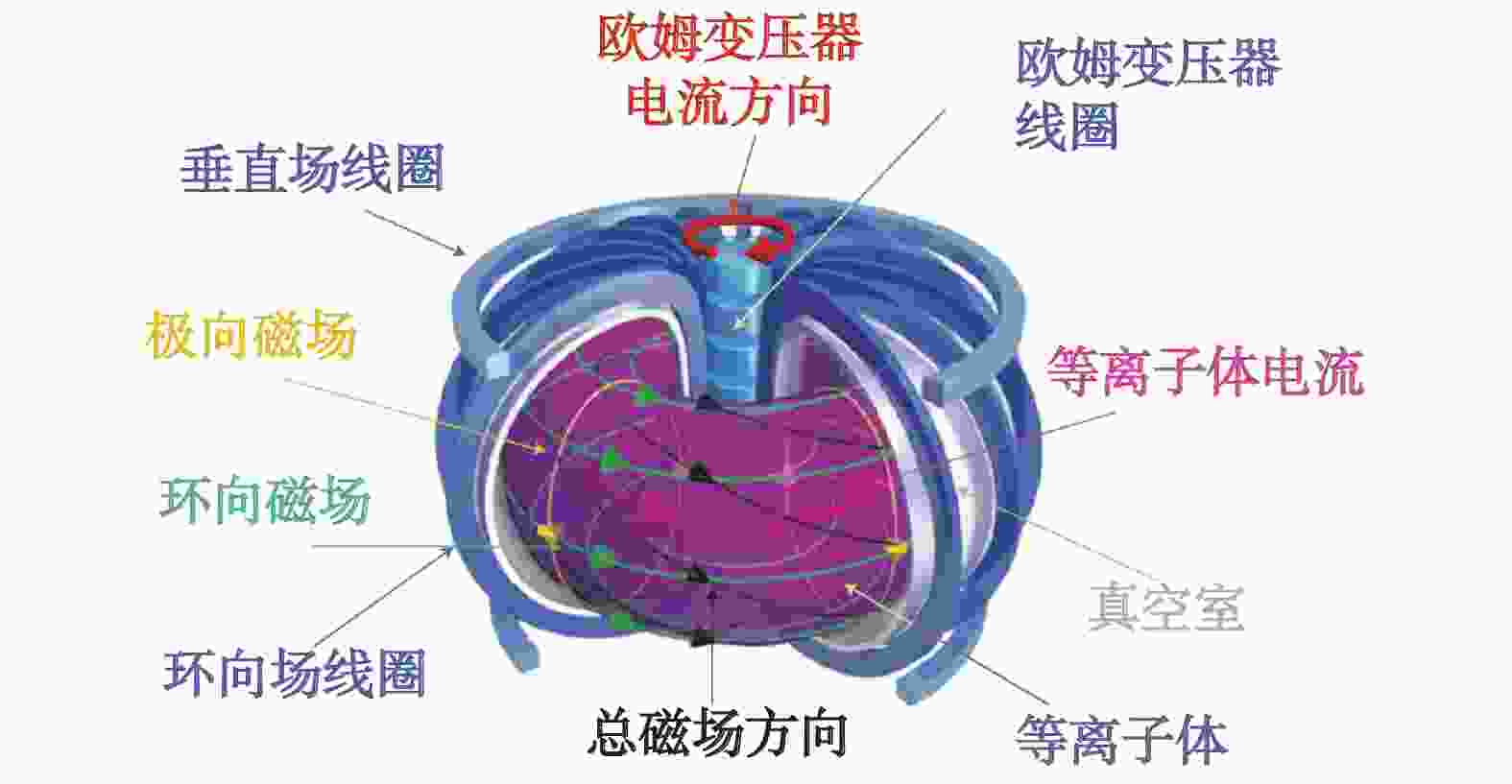
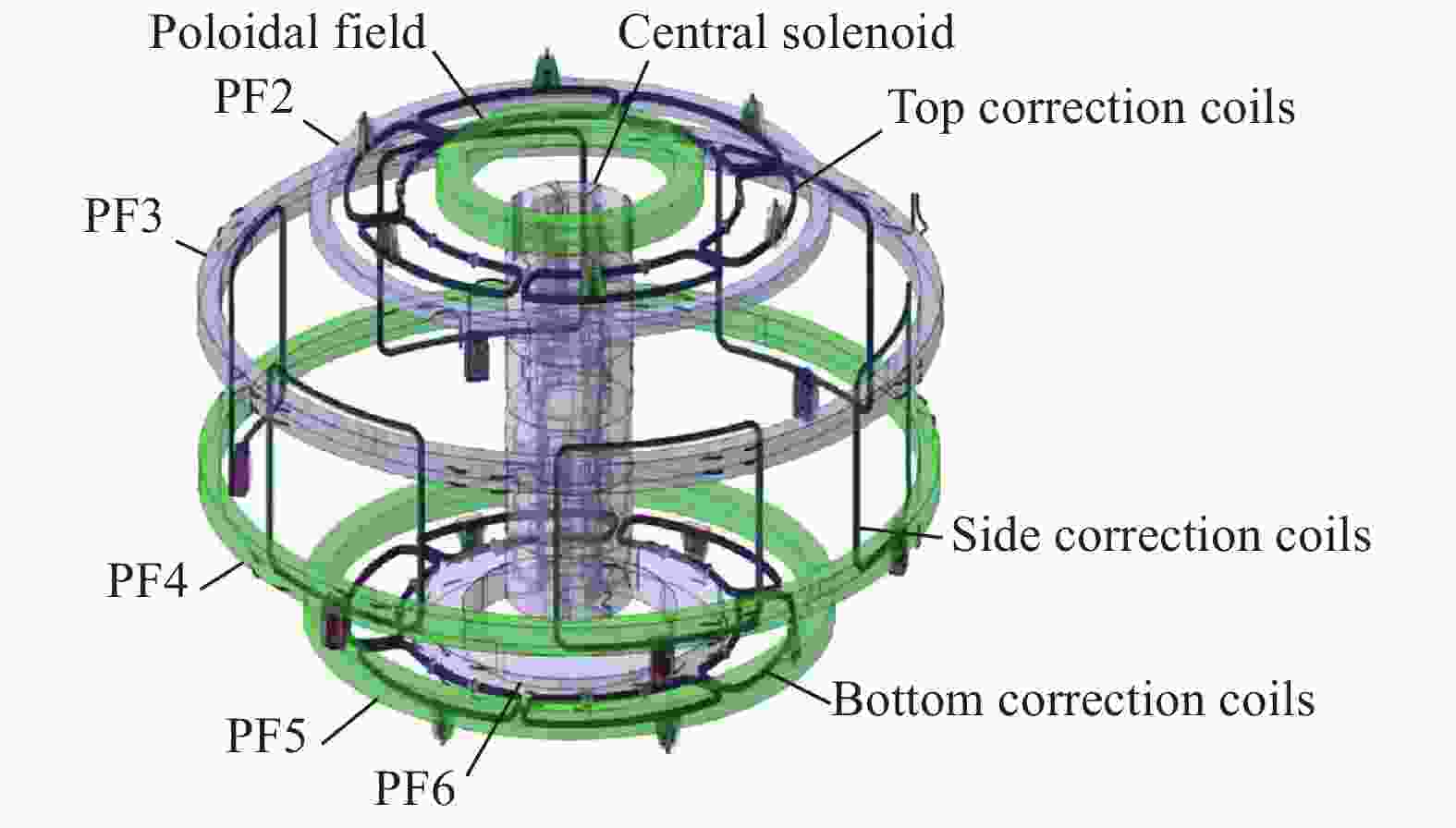
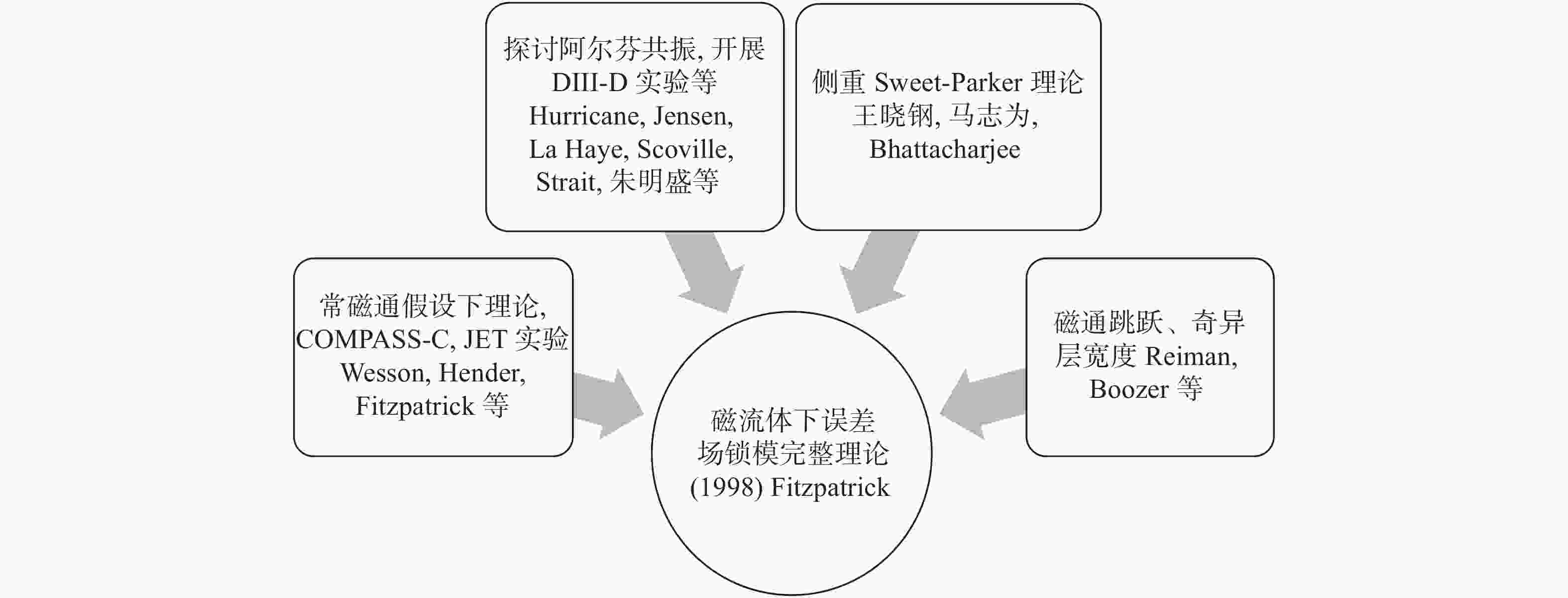
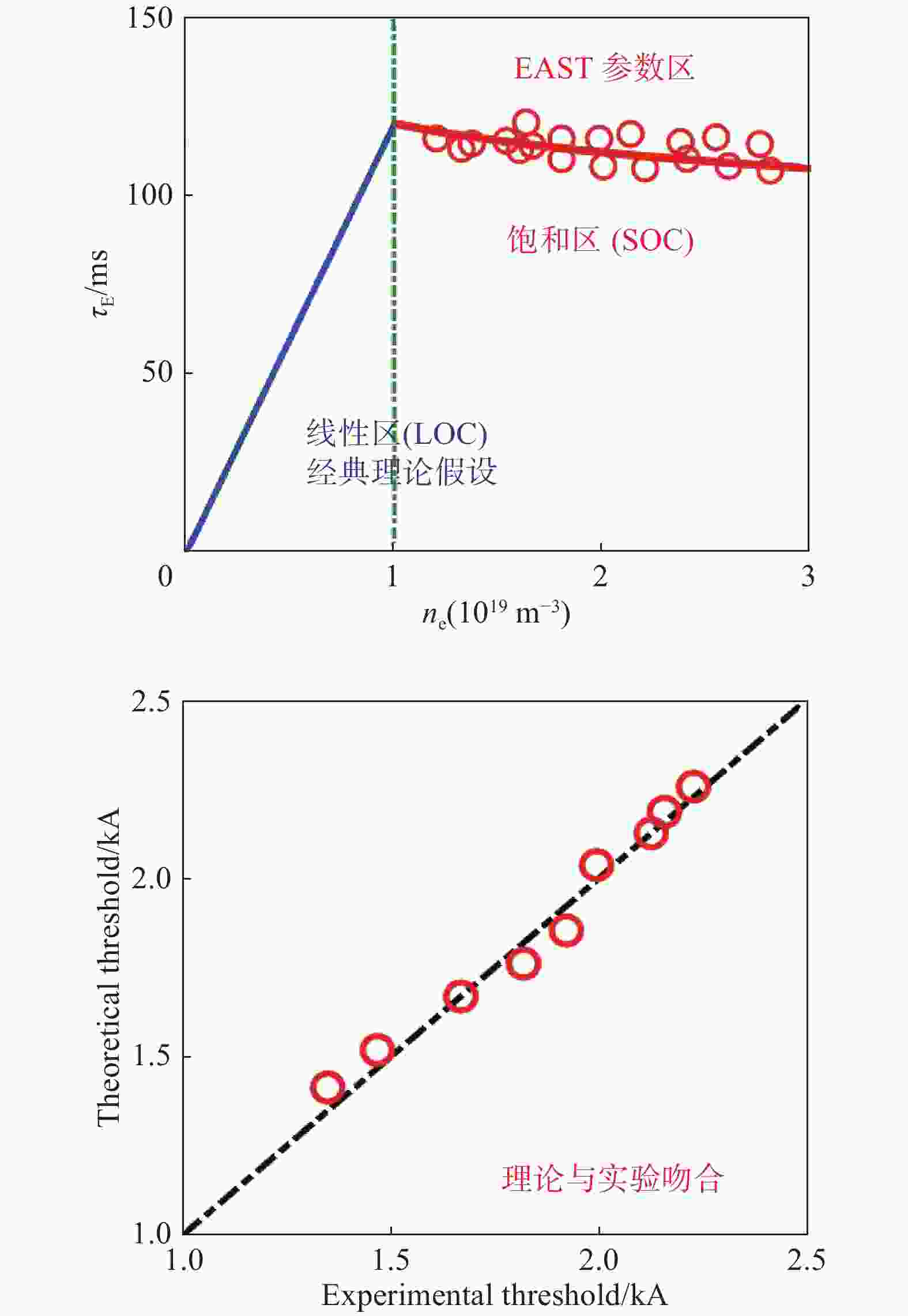
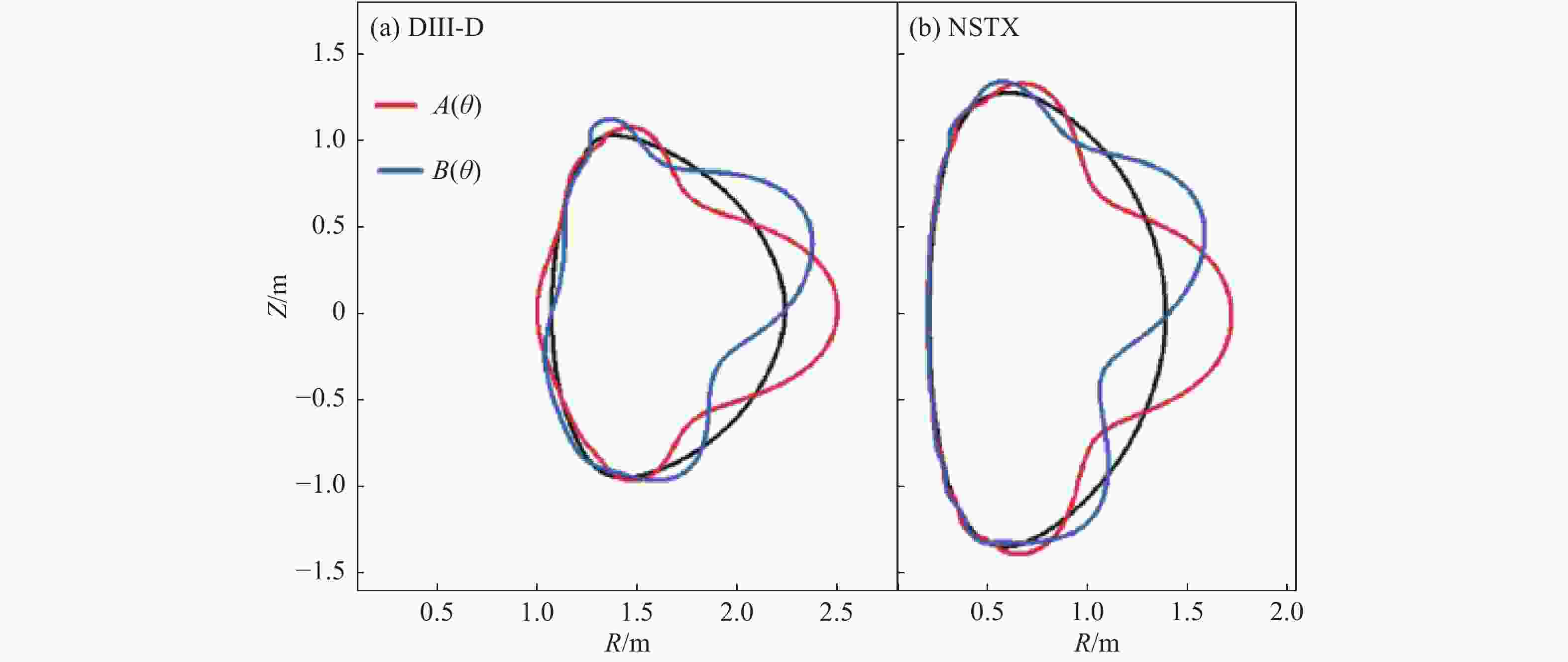
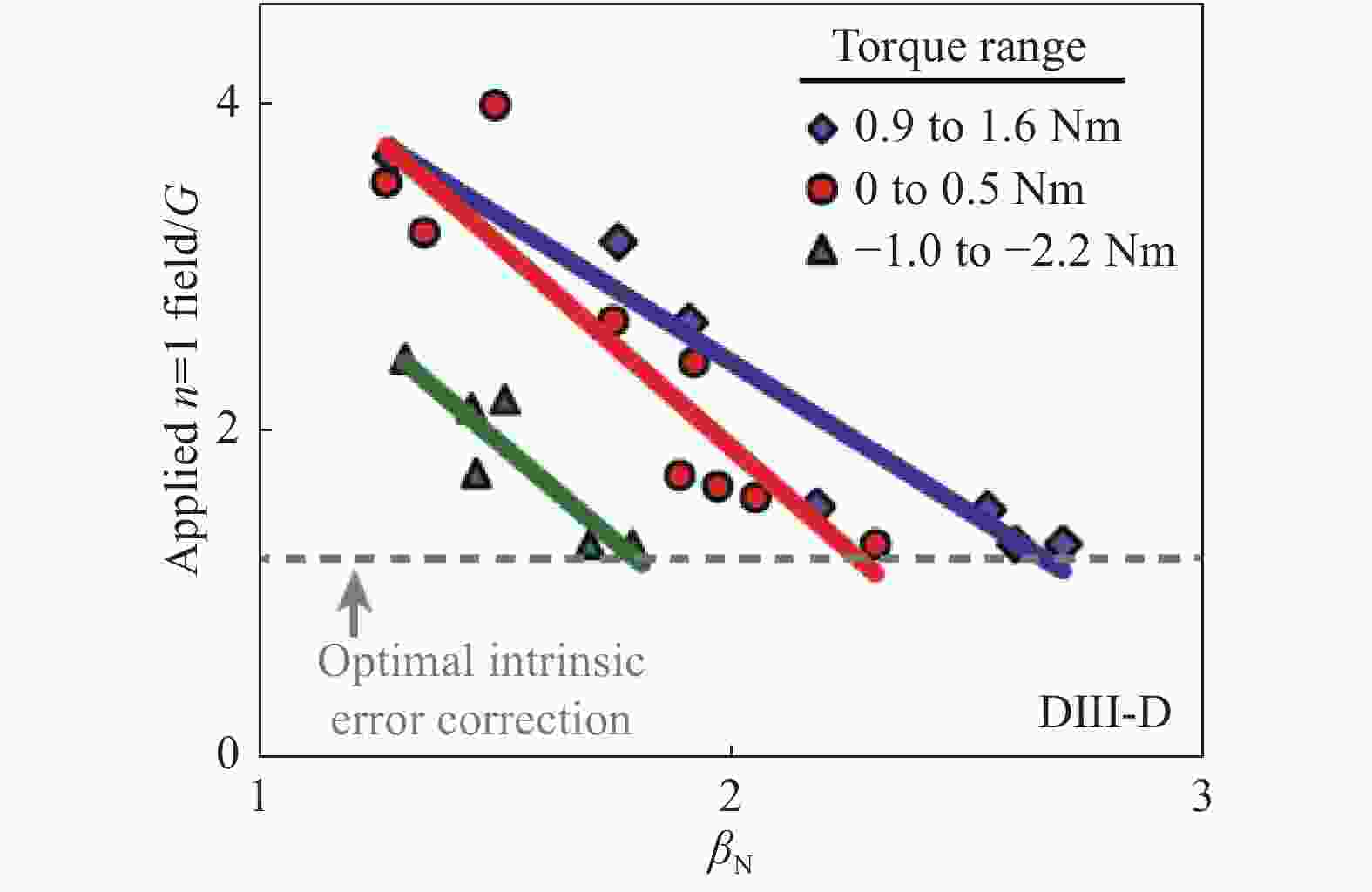
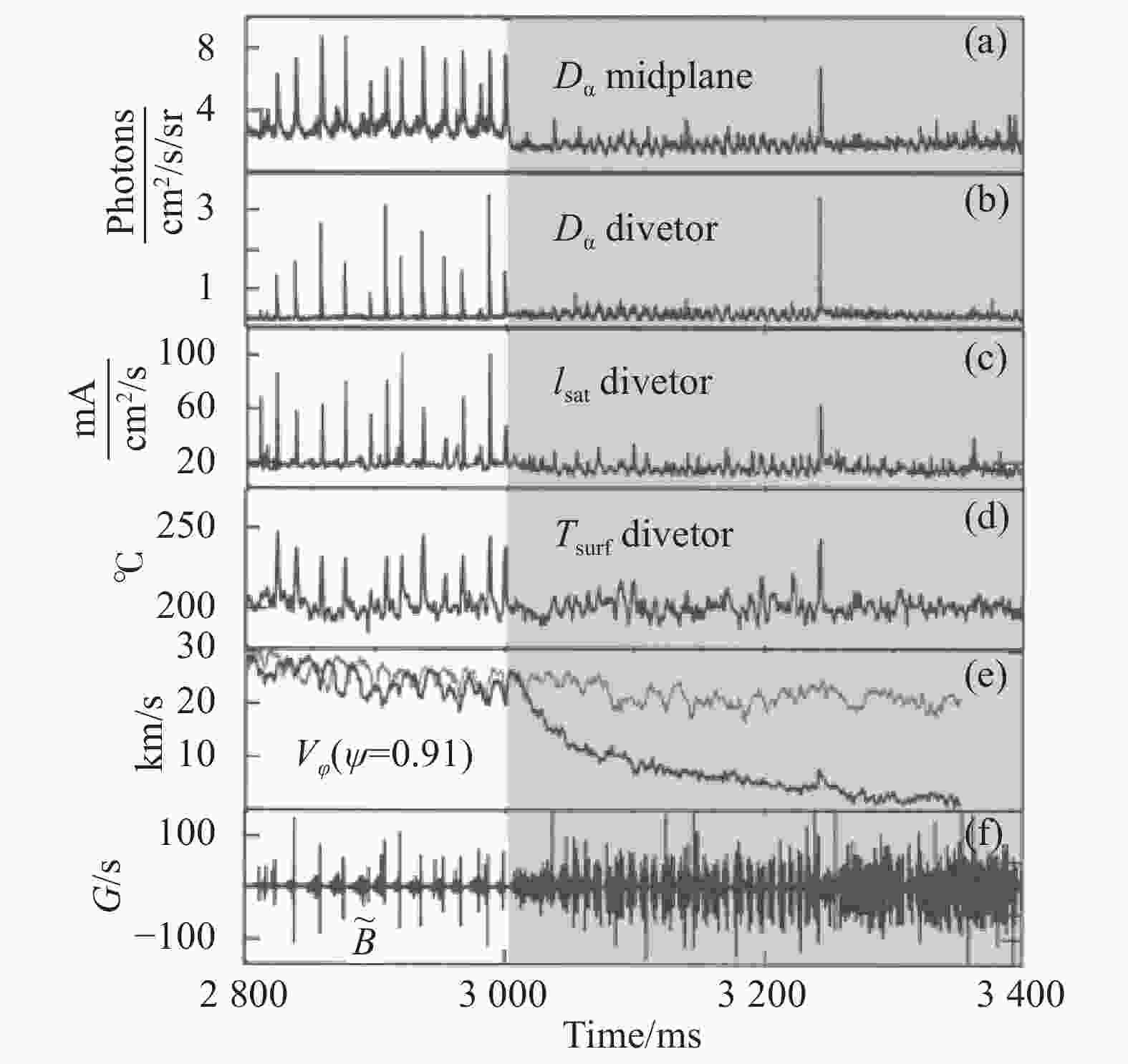
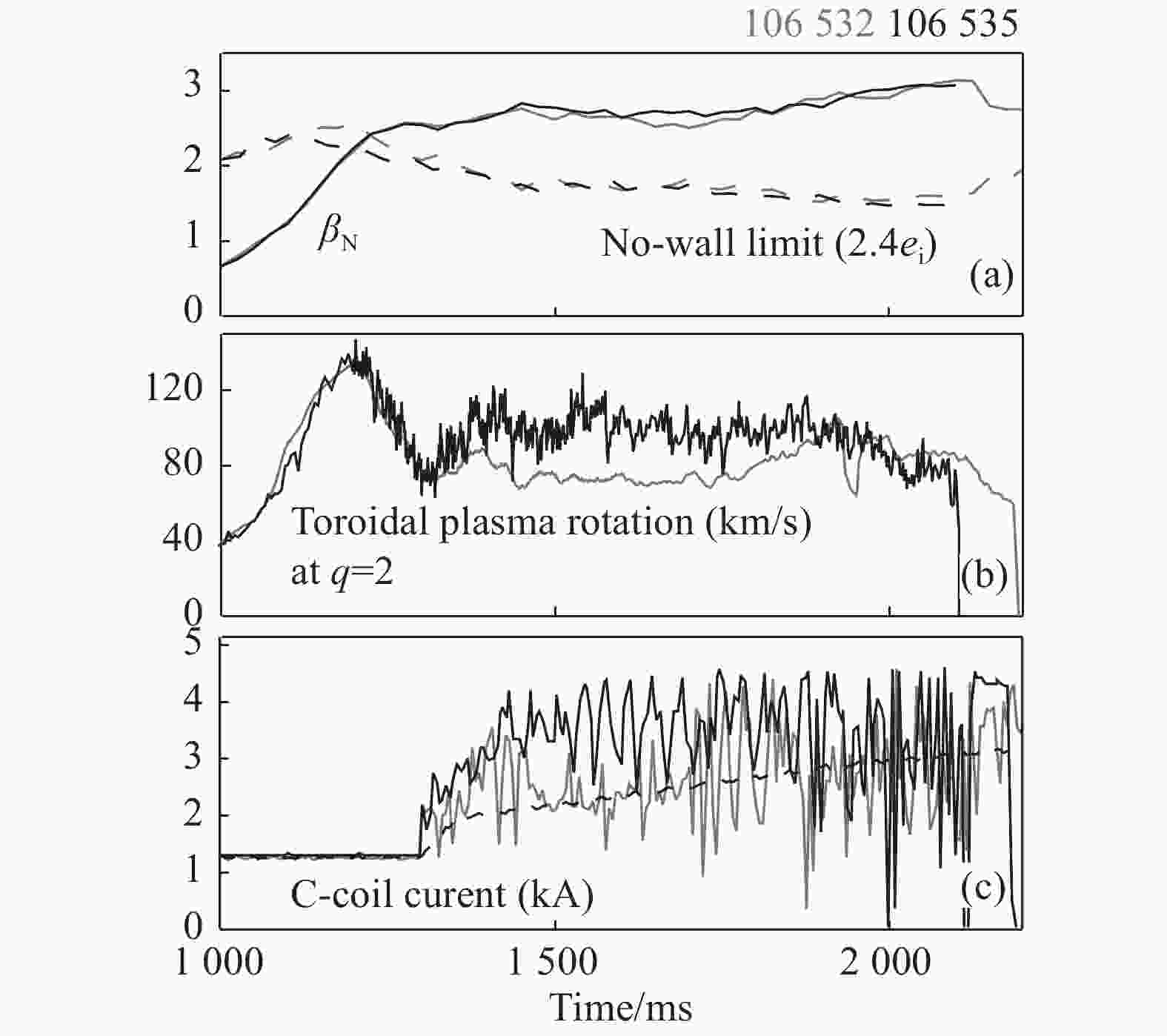
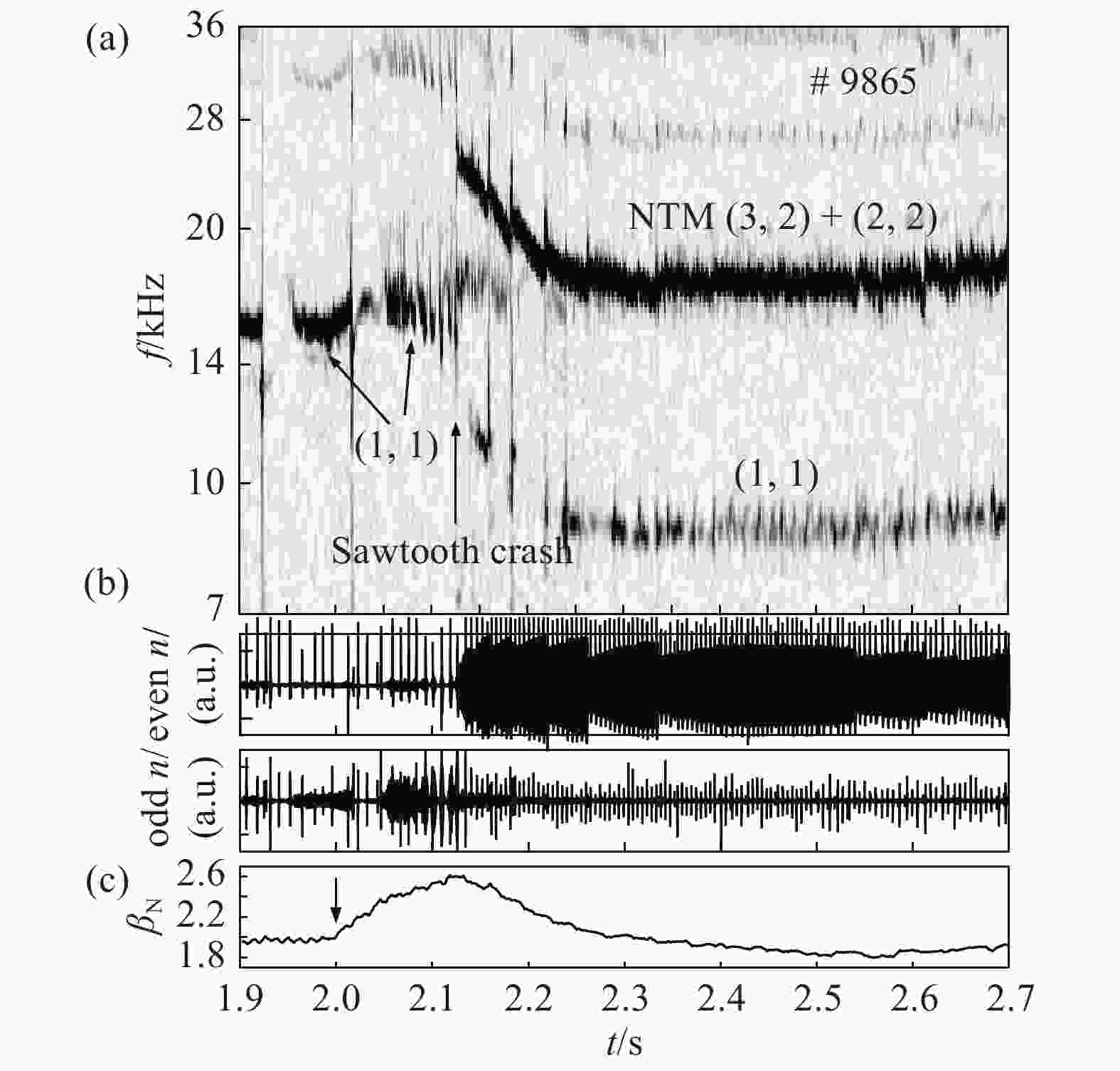


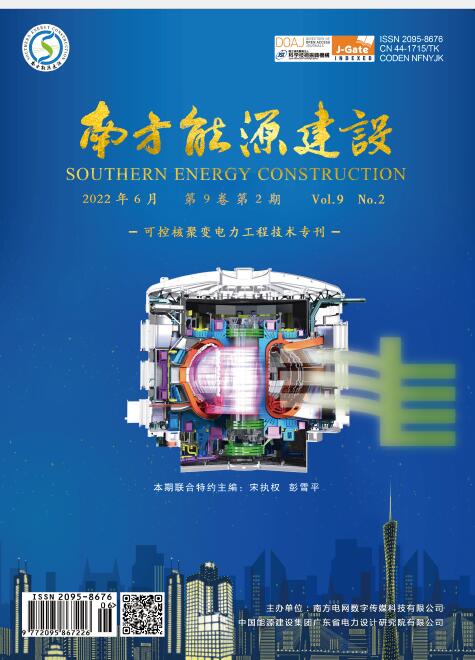

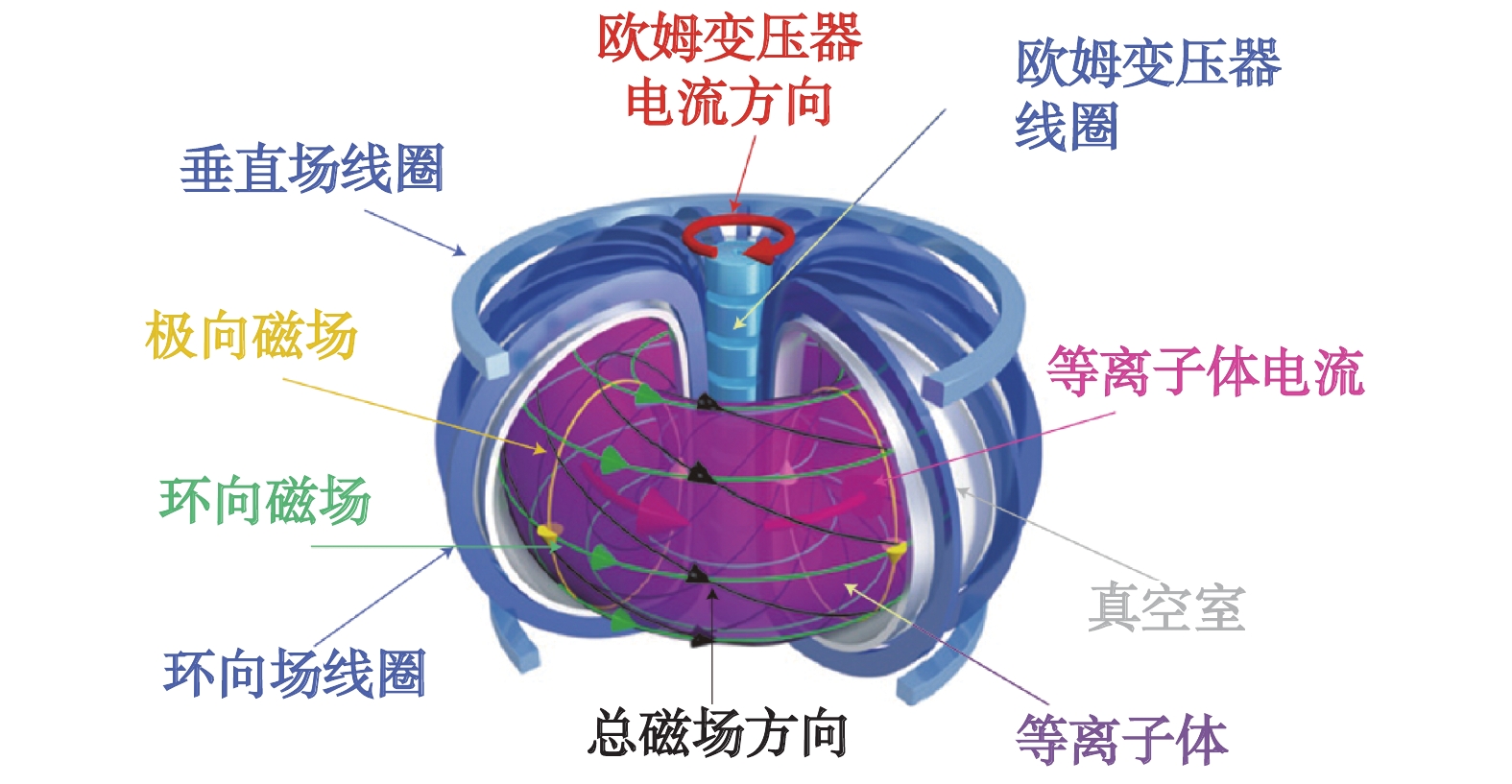










 DownLoad:
DownLoad:
